Multigenerational laboratory culture of pelagic ctenophores and CRISPR–Cas9 genome editing in the lobateMnemiopsis leidyi
J. S. Presnell, M. Bubel, T. Knowles, W. Patry, W. E. Browne
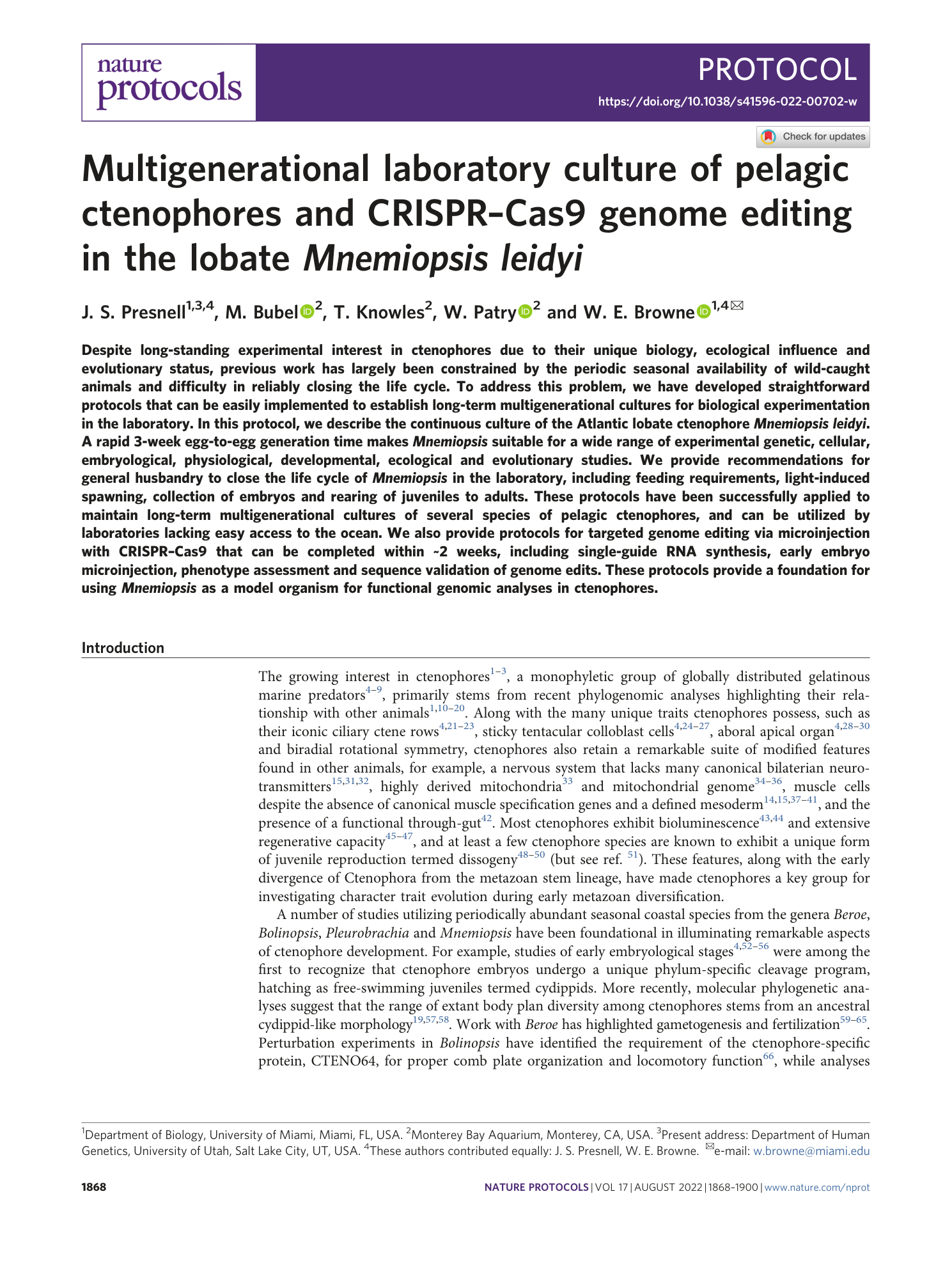
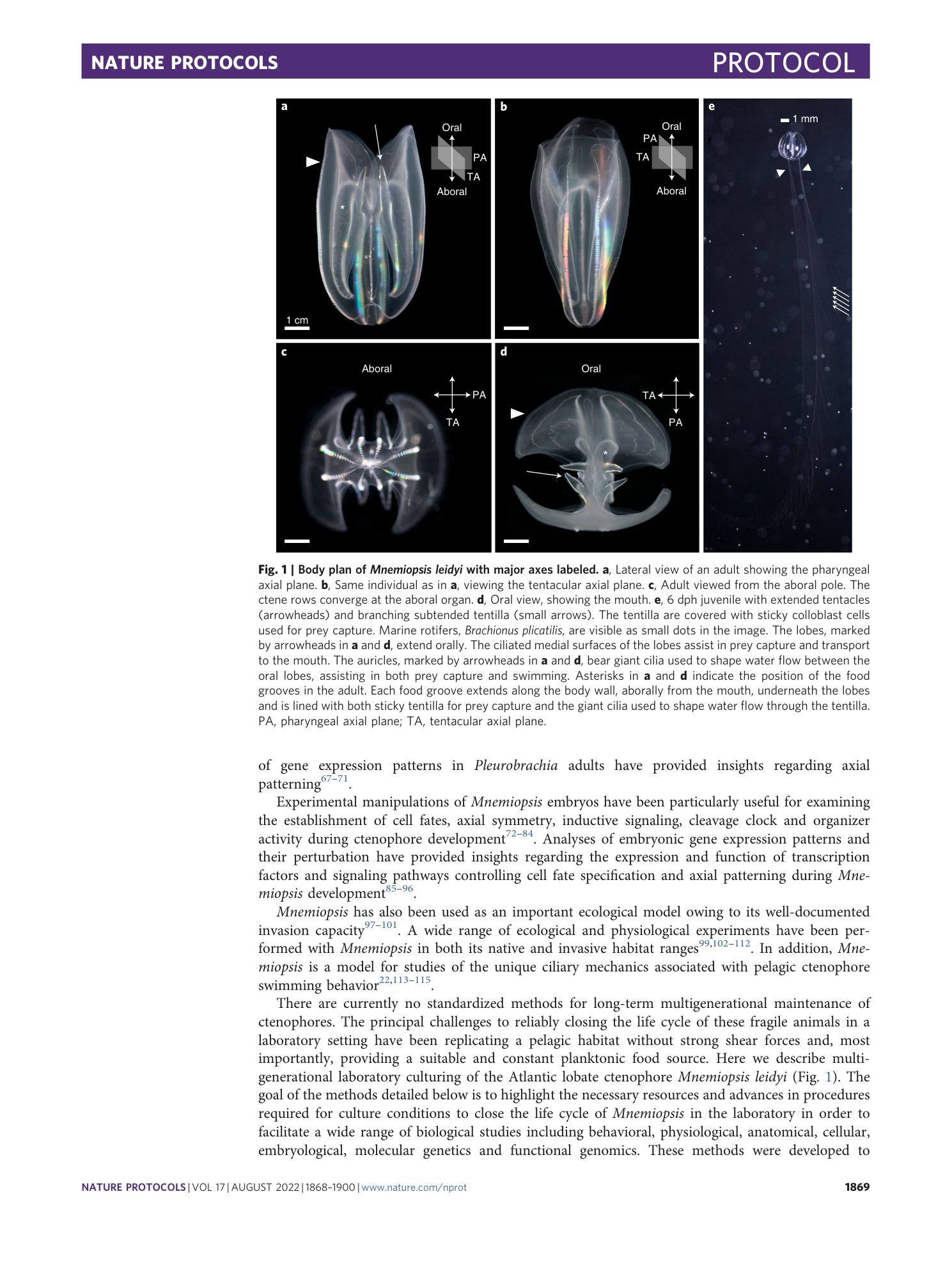
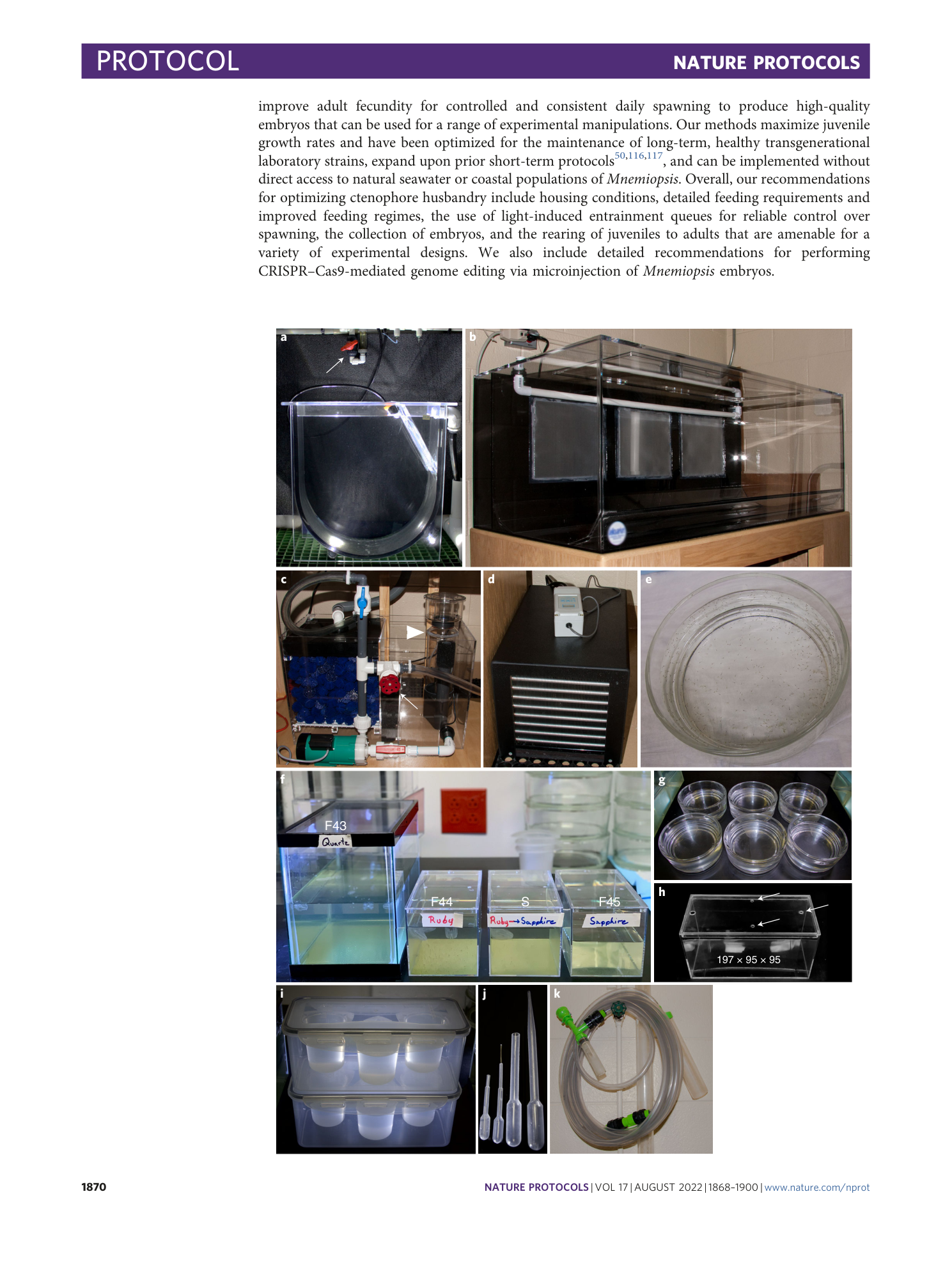

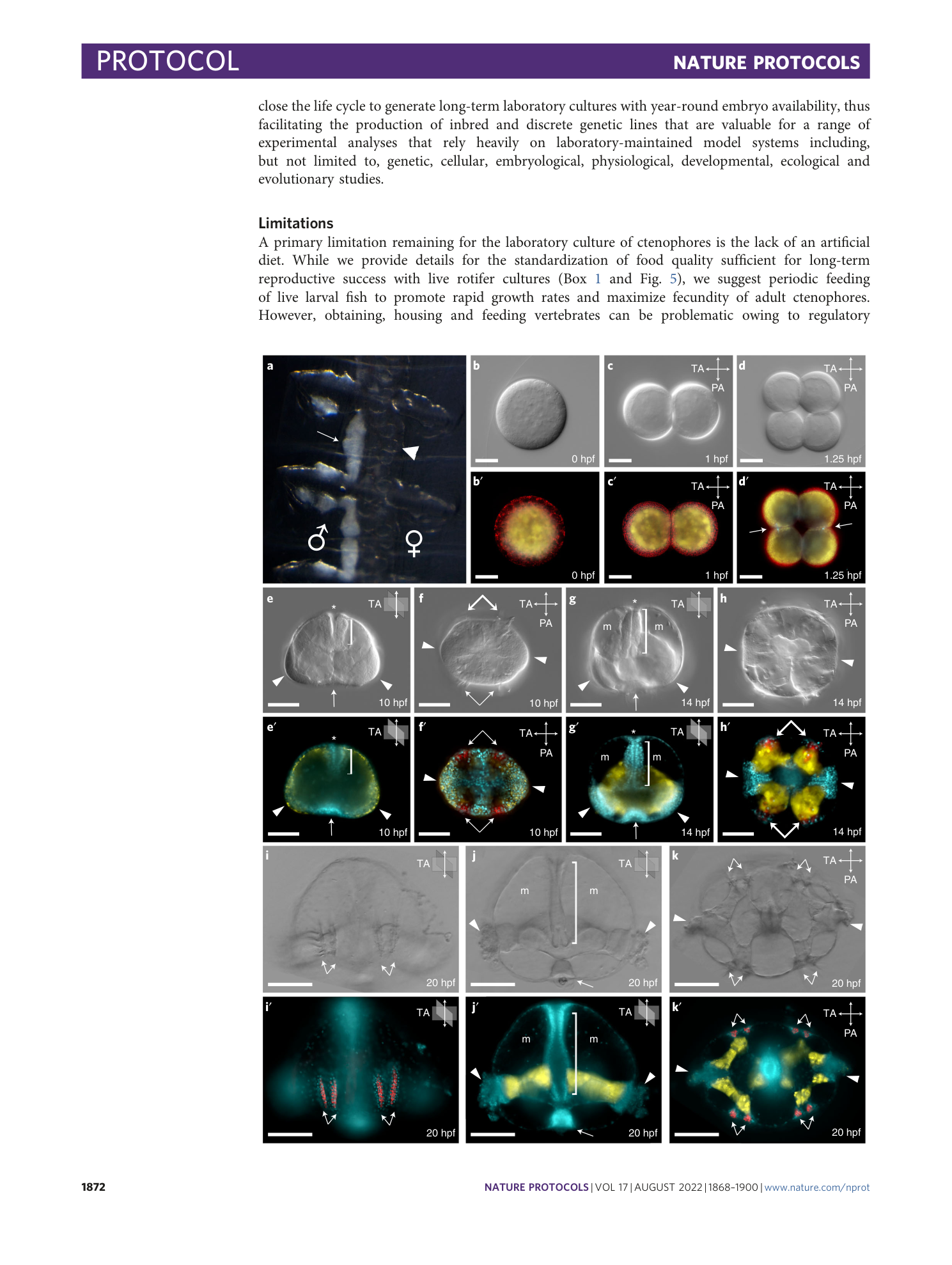
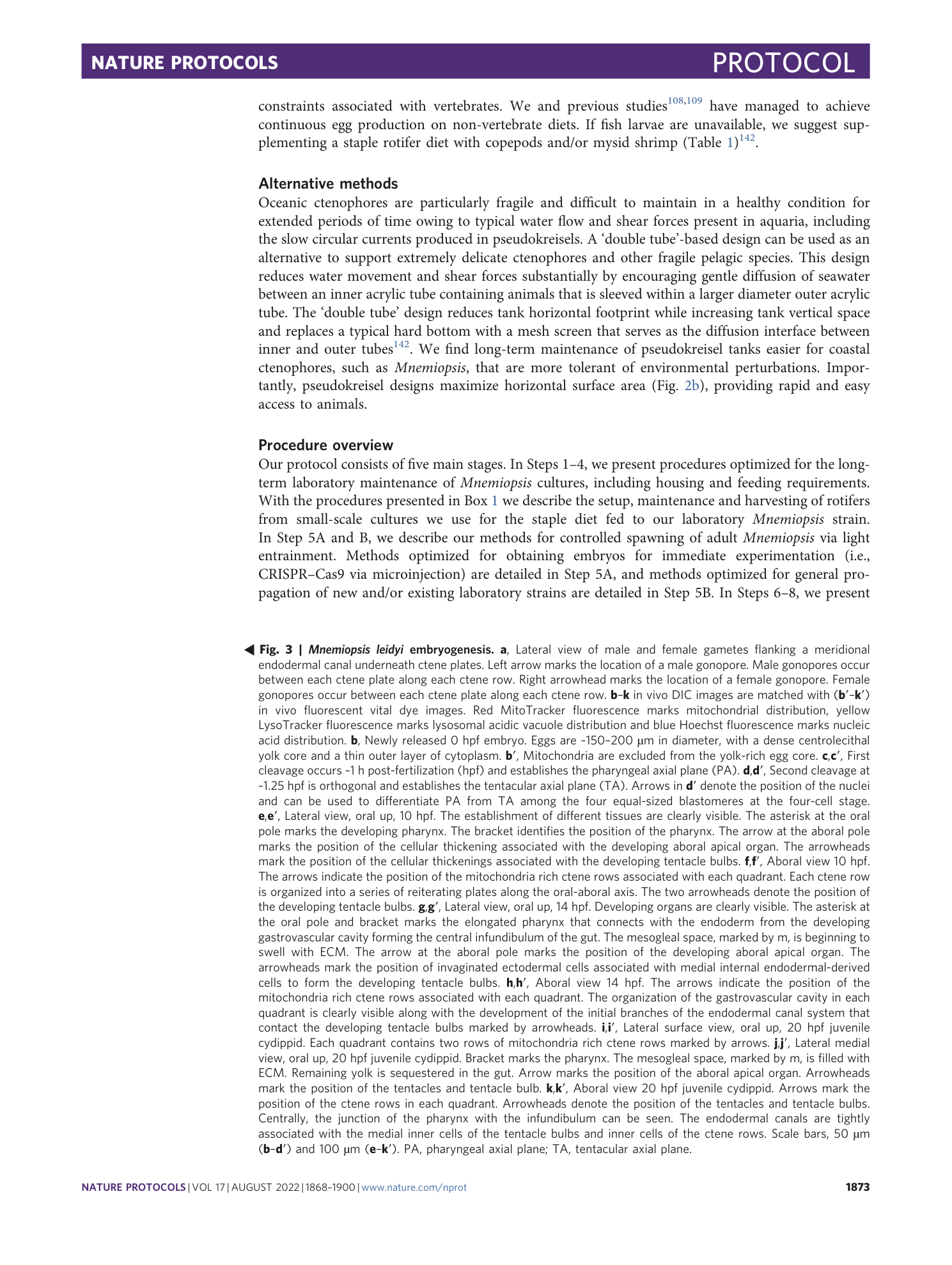
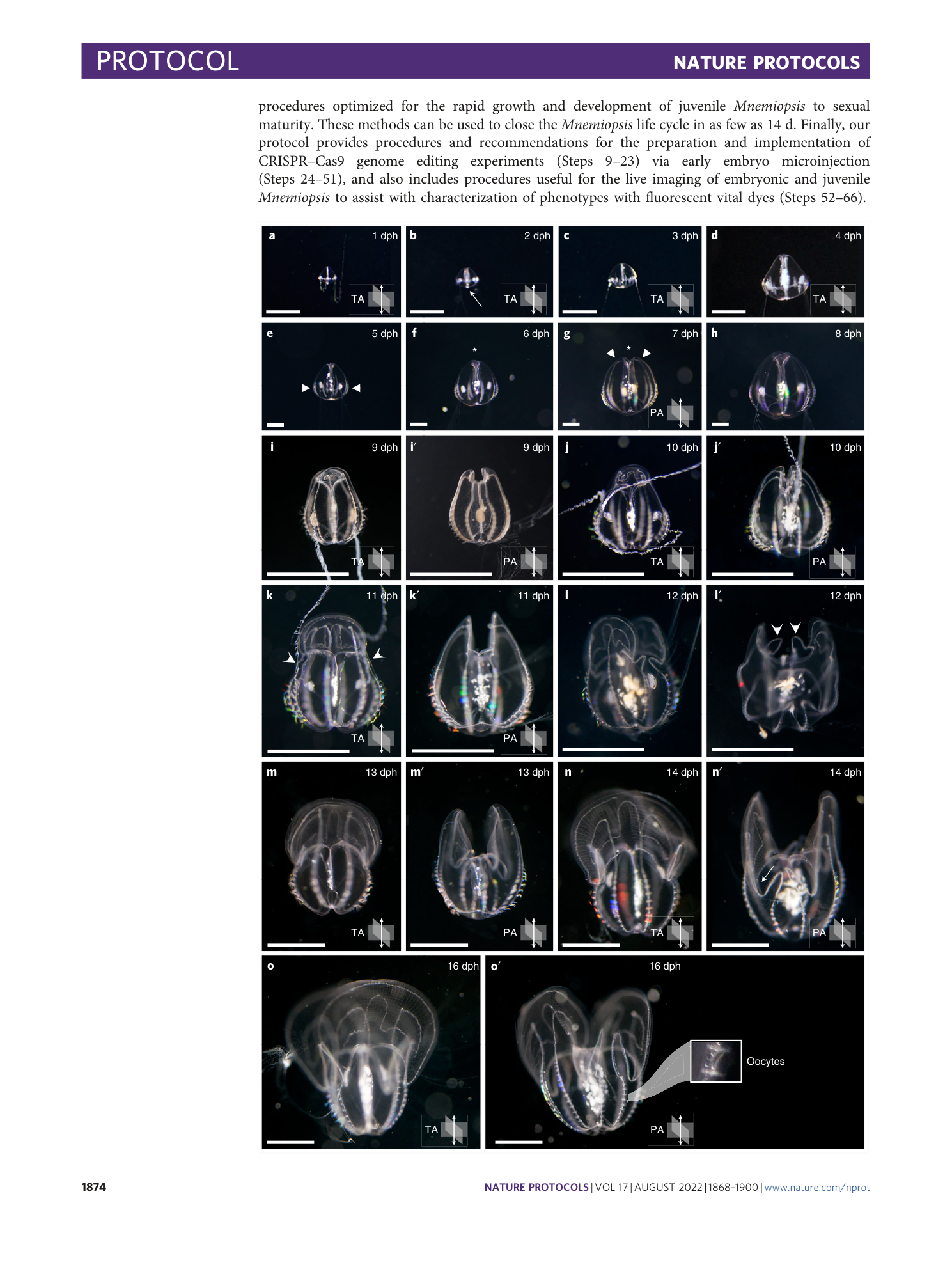
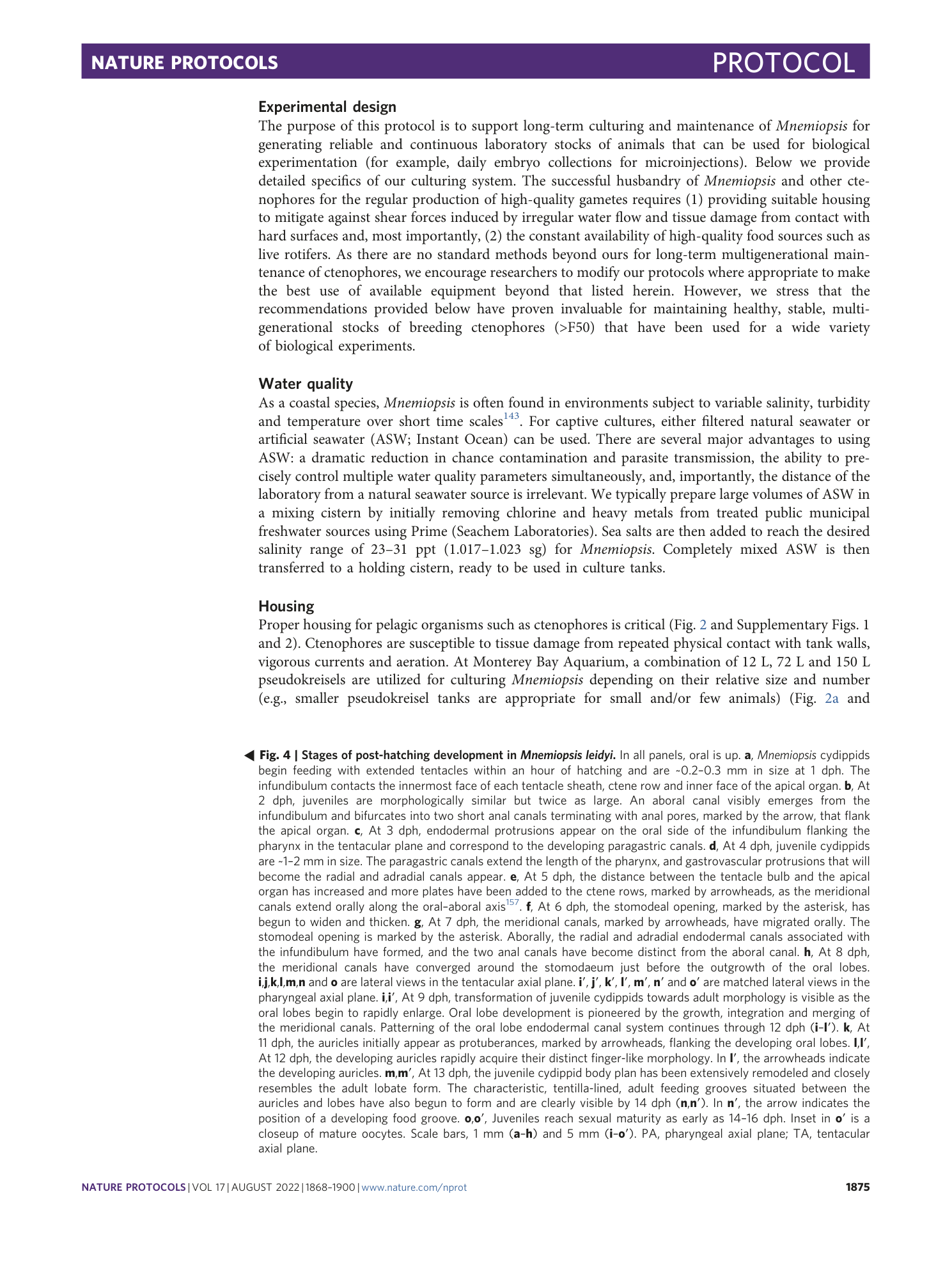

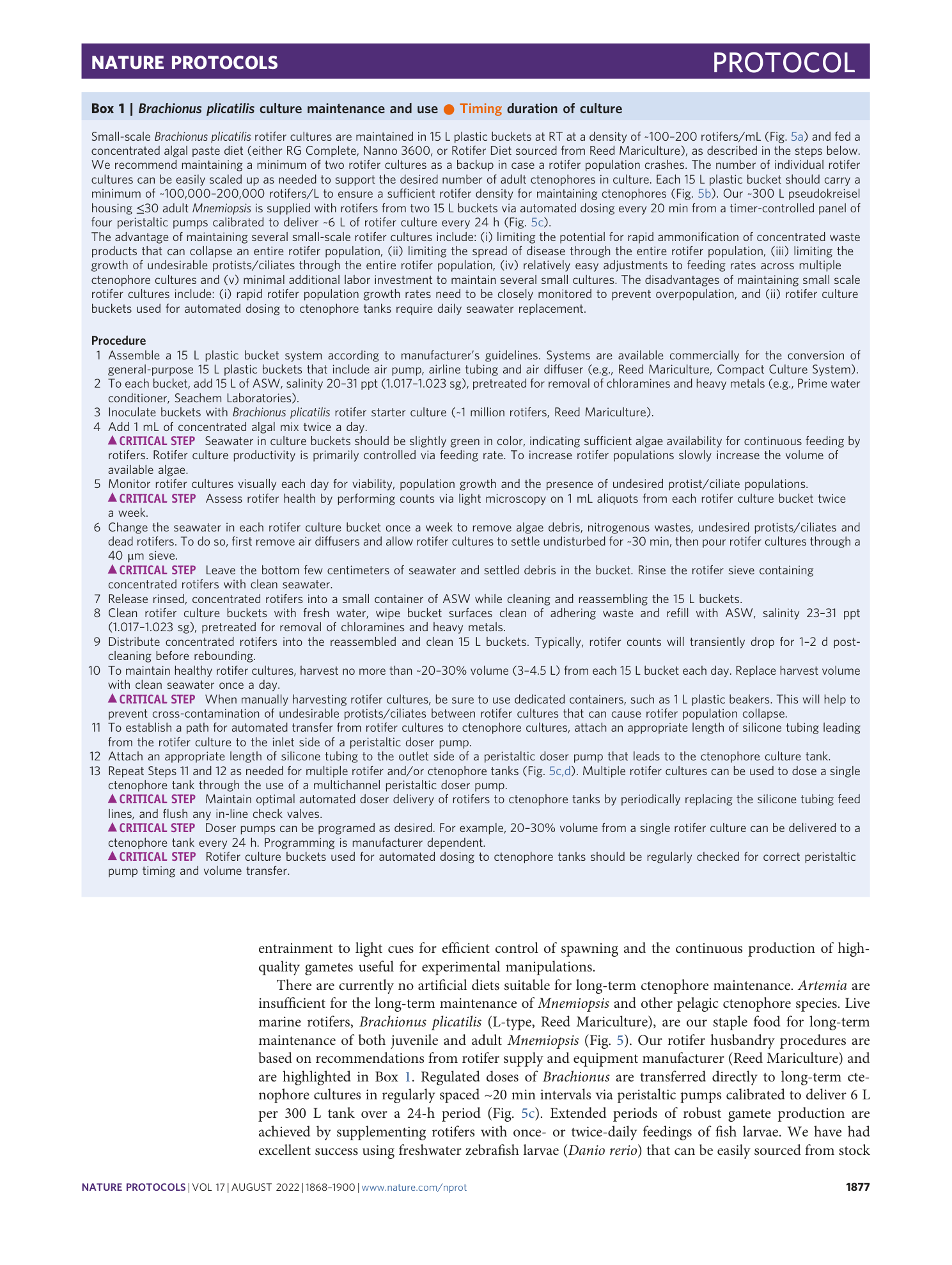
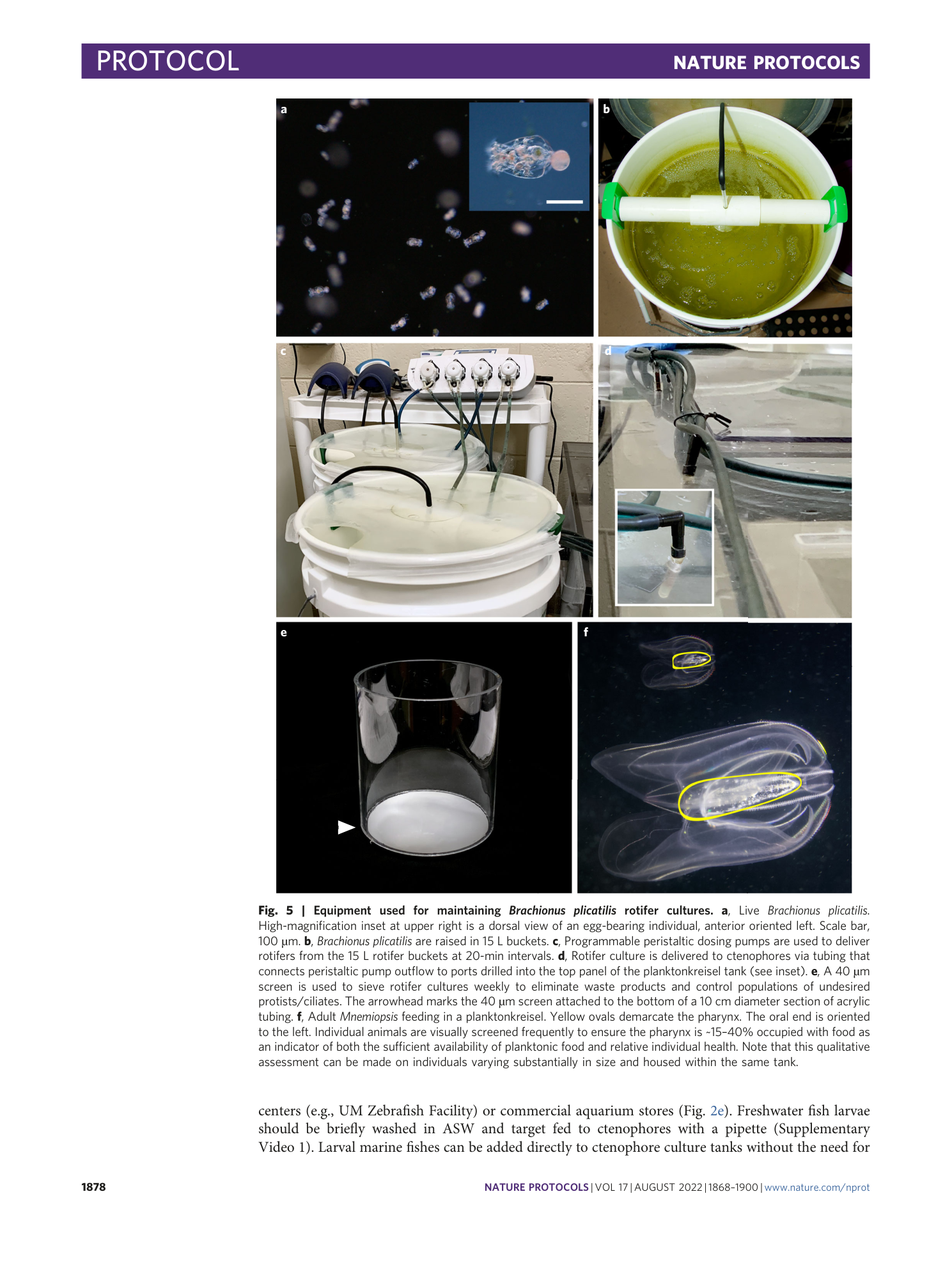
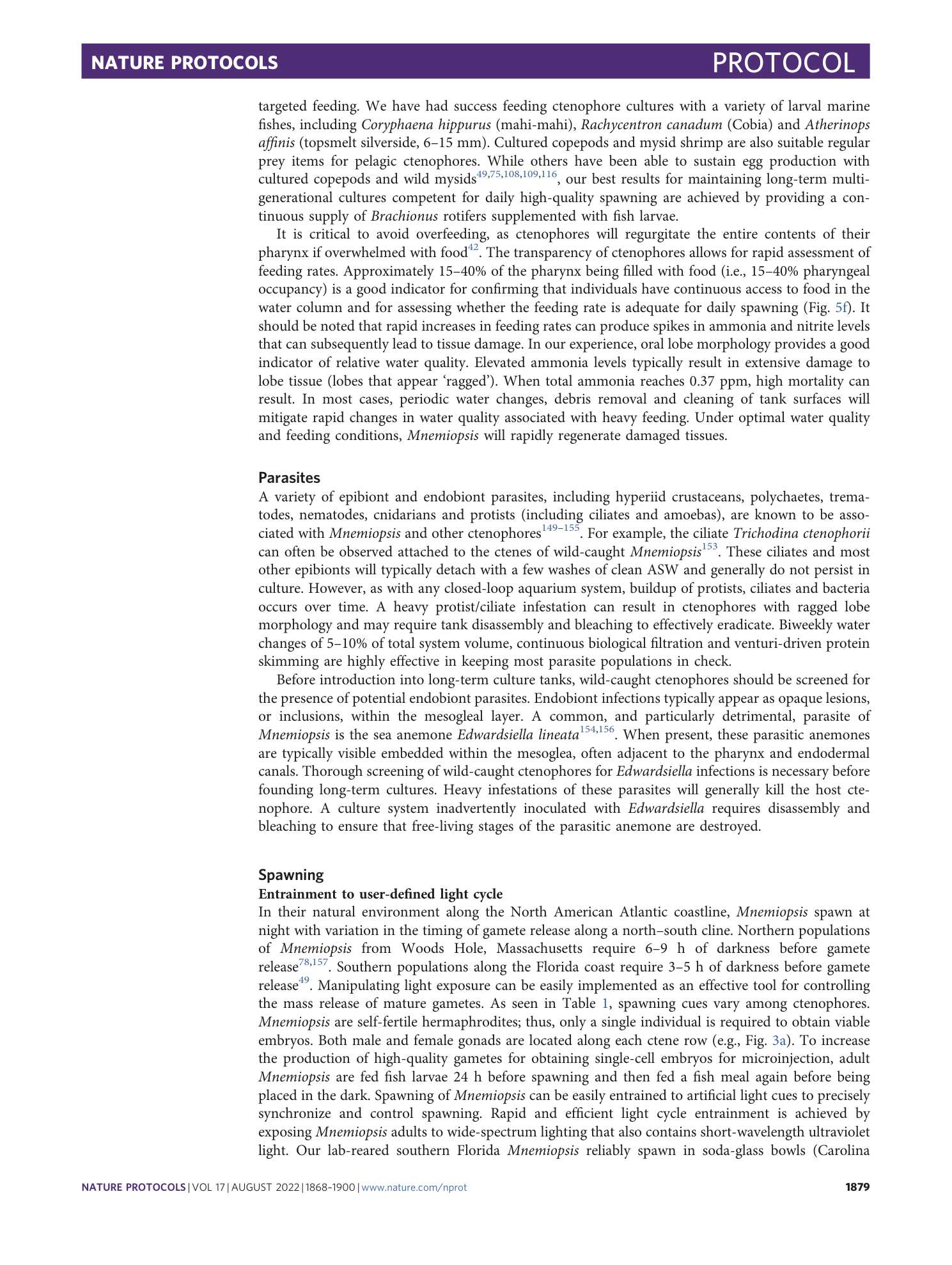
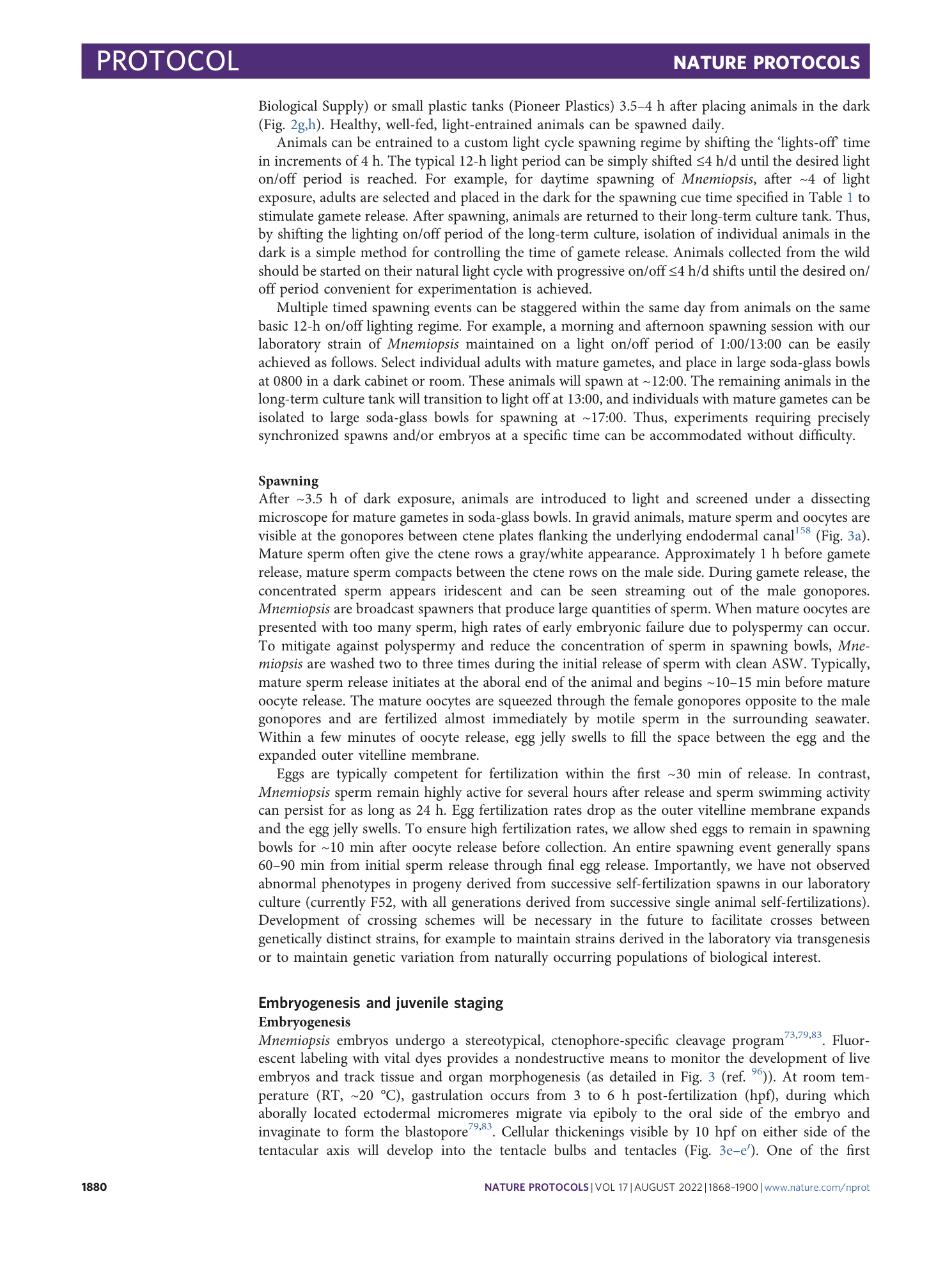
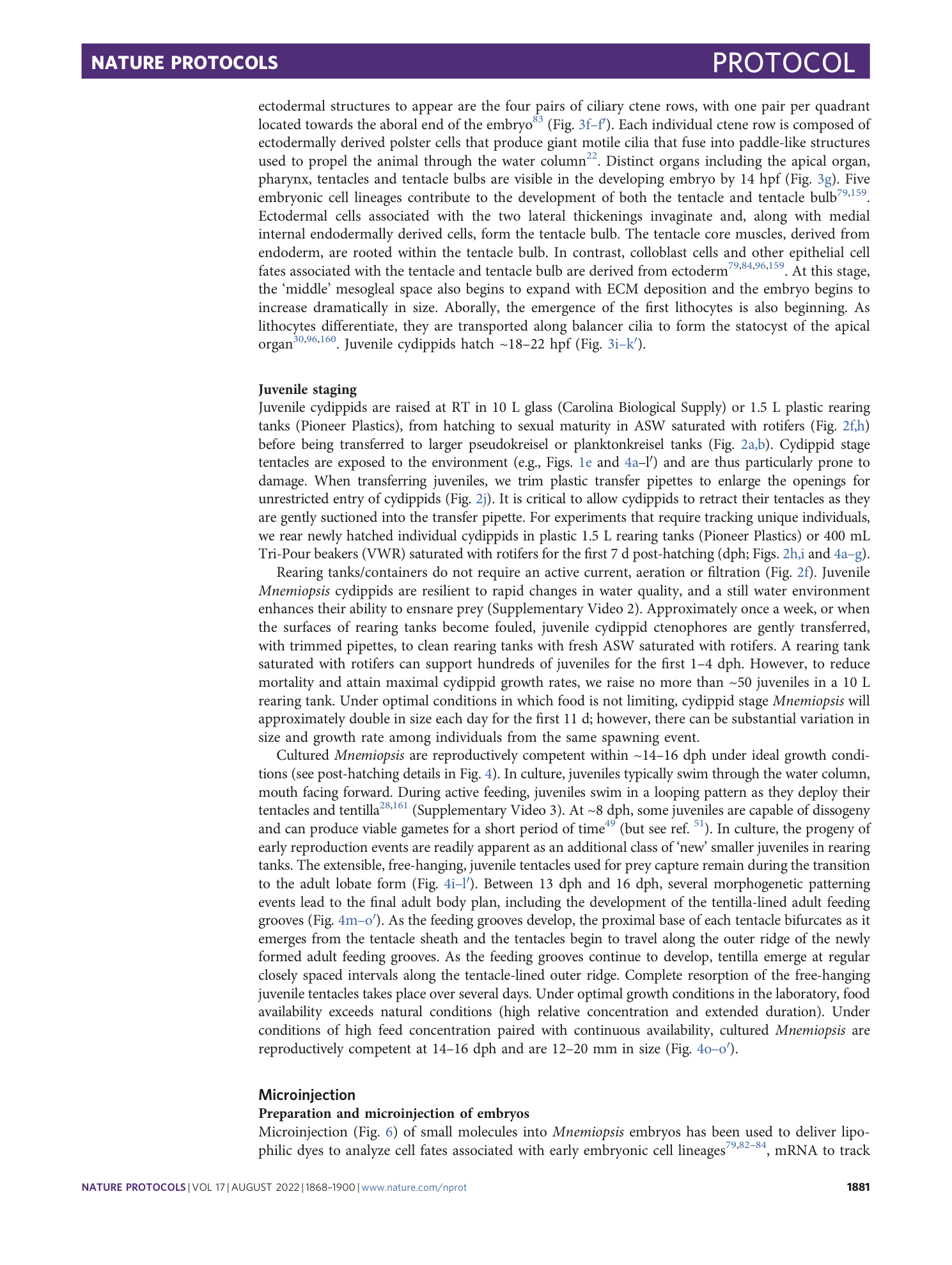
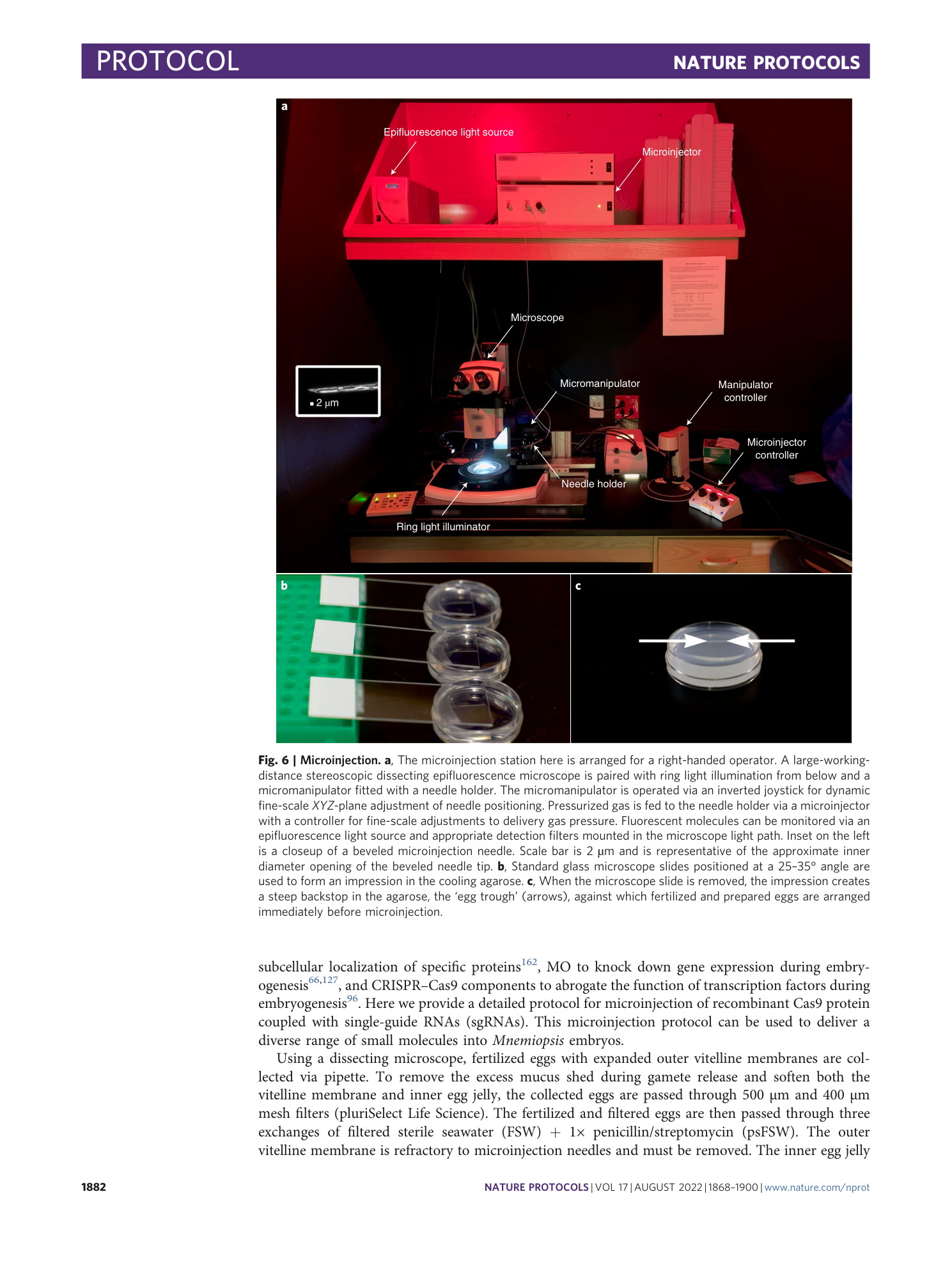
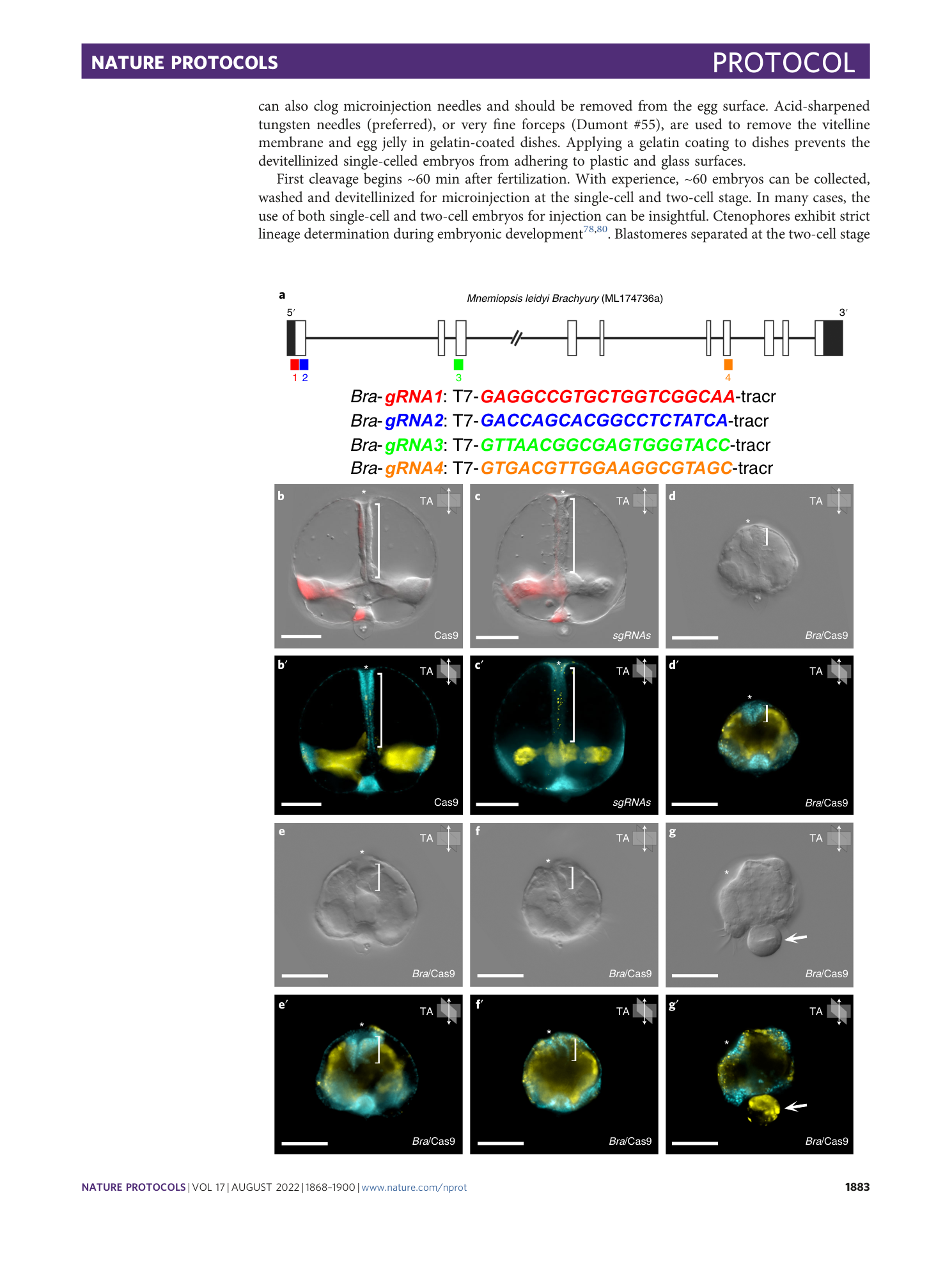
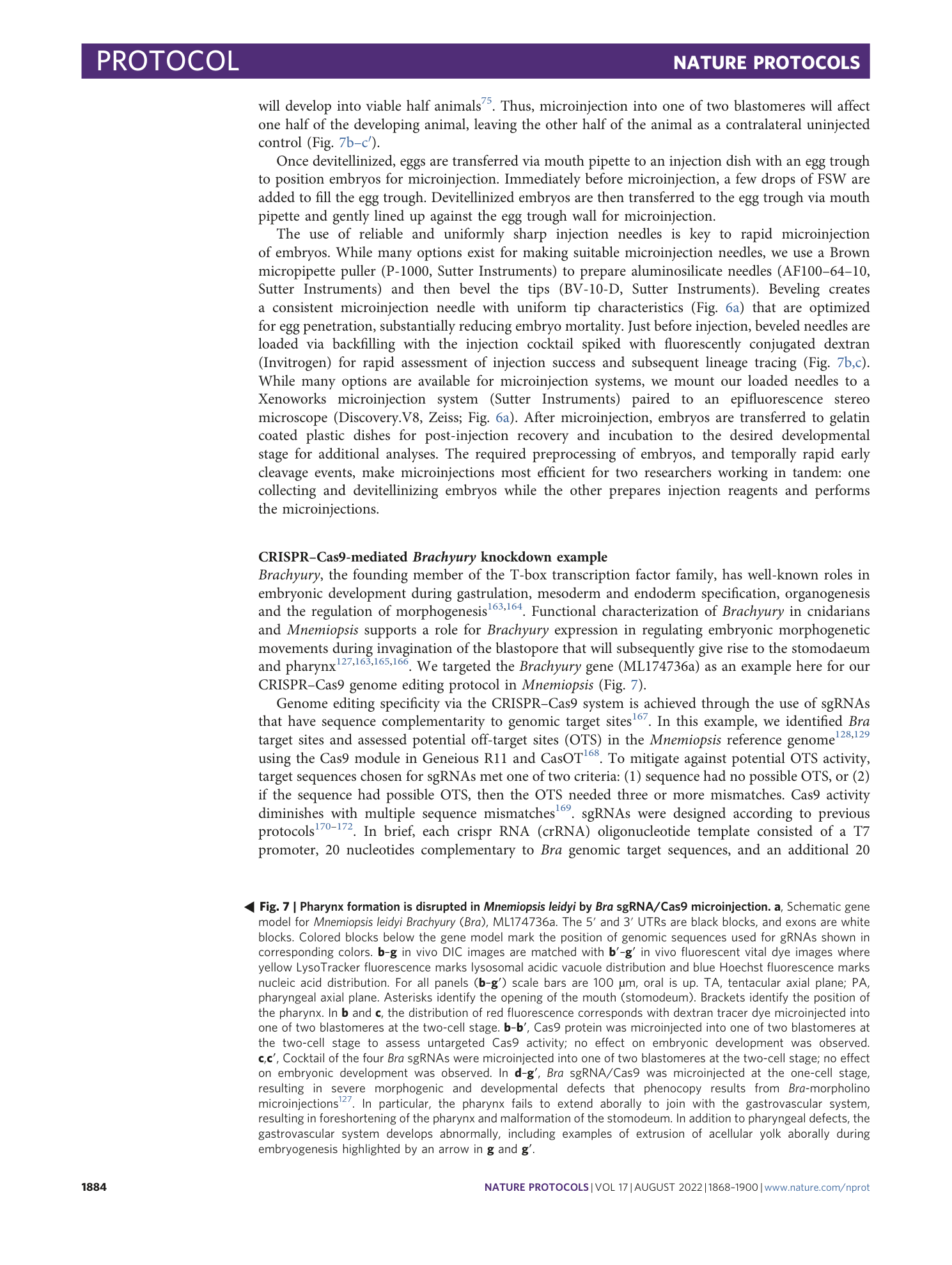
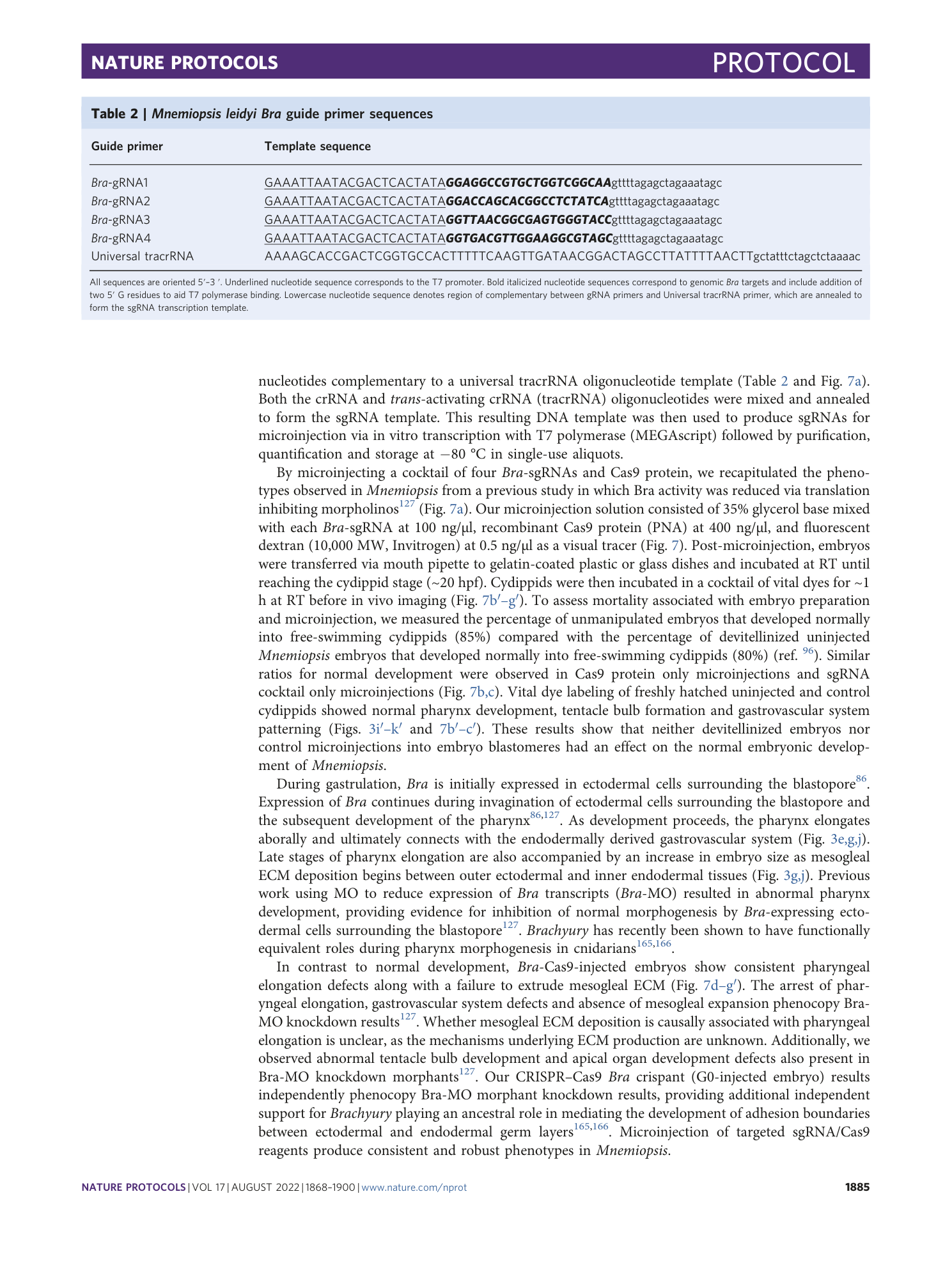
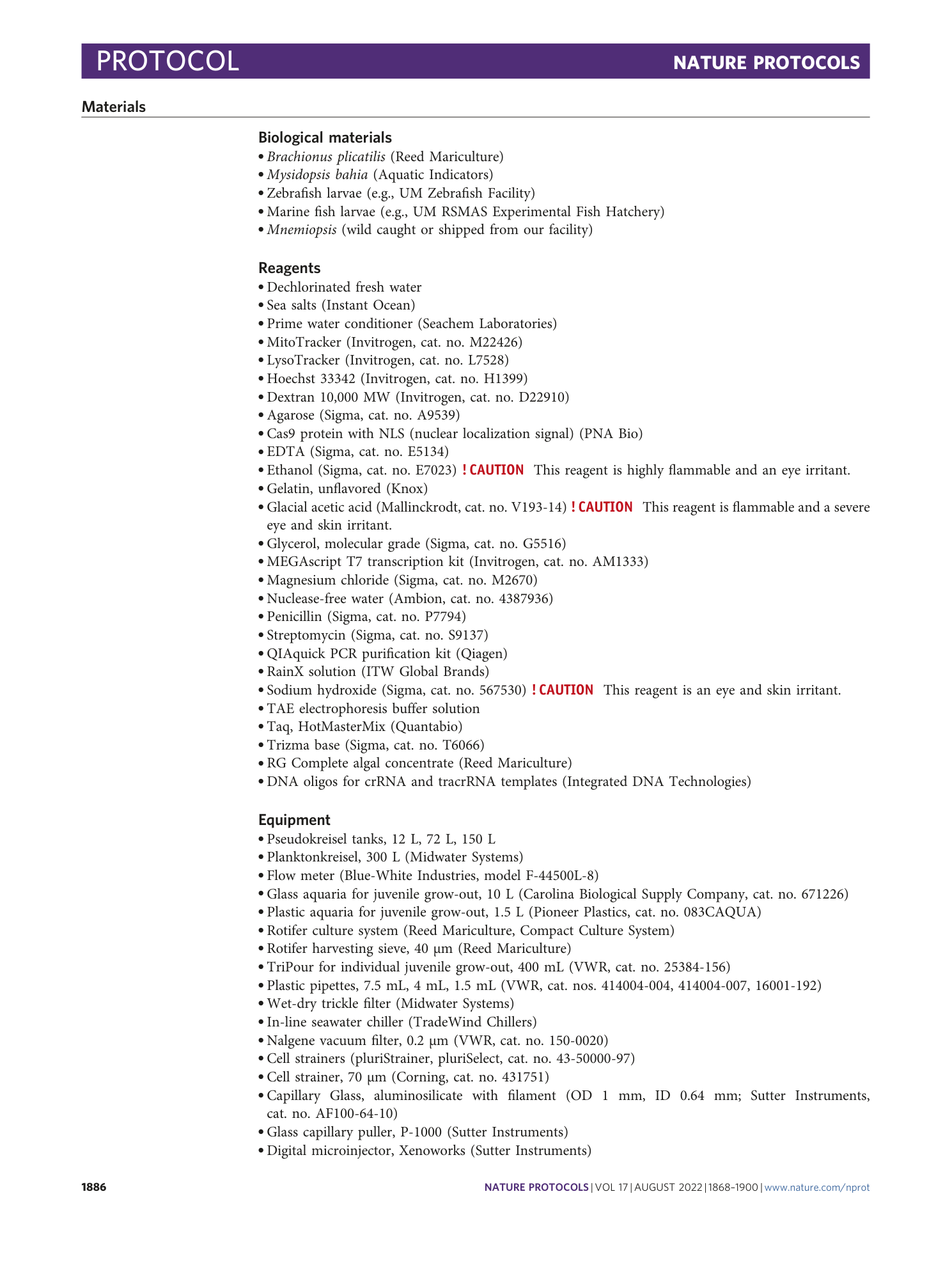
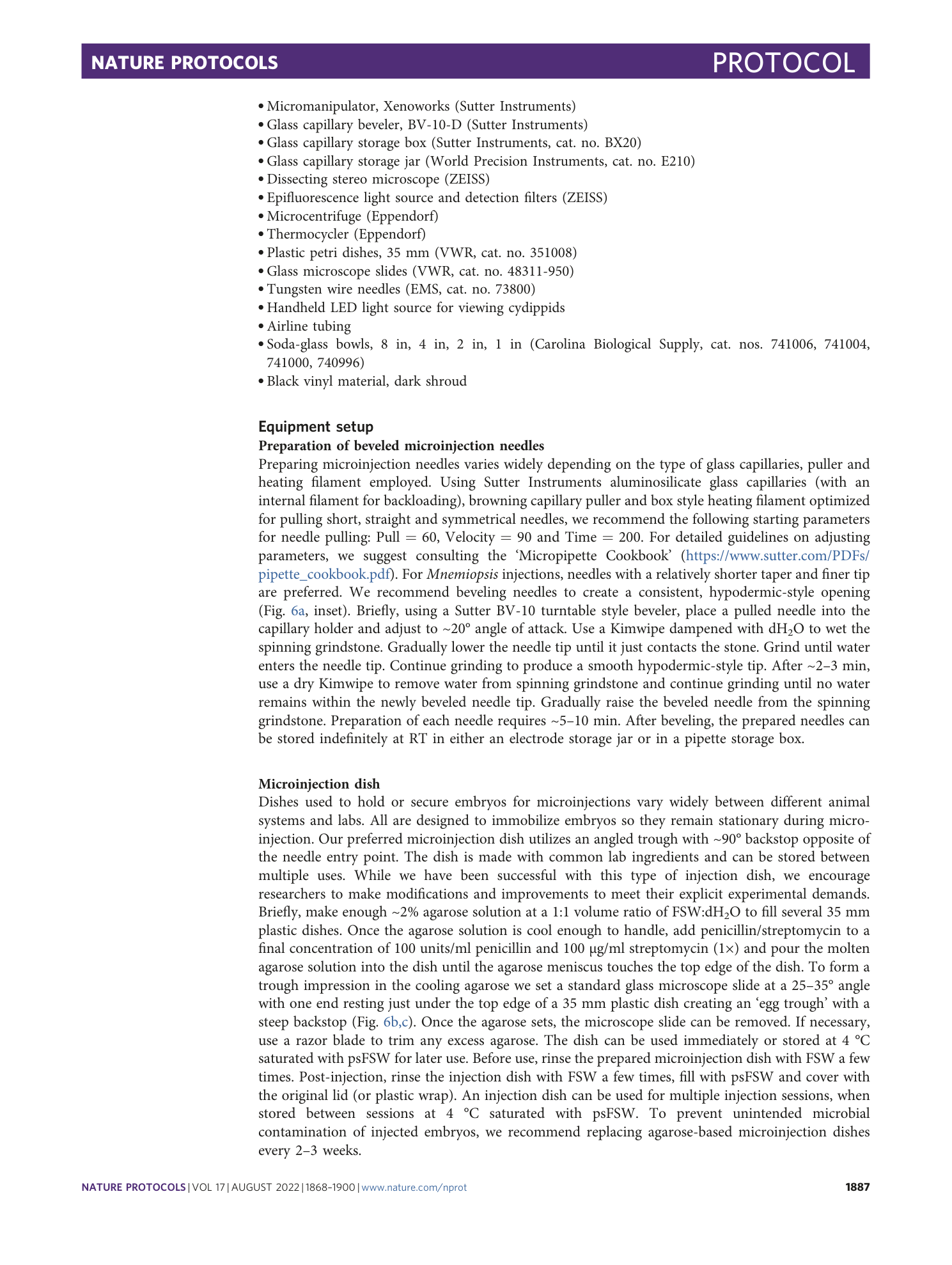
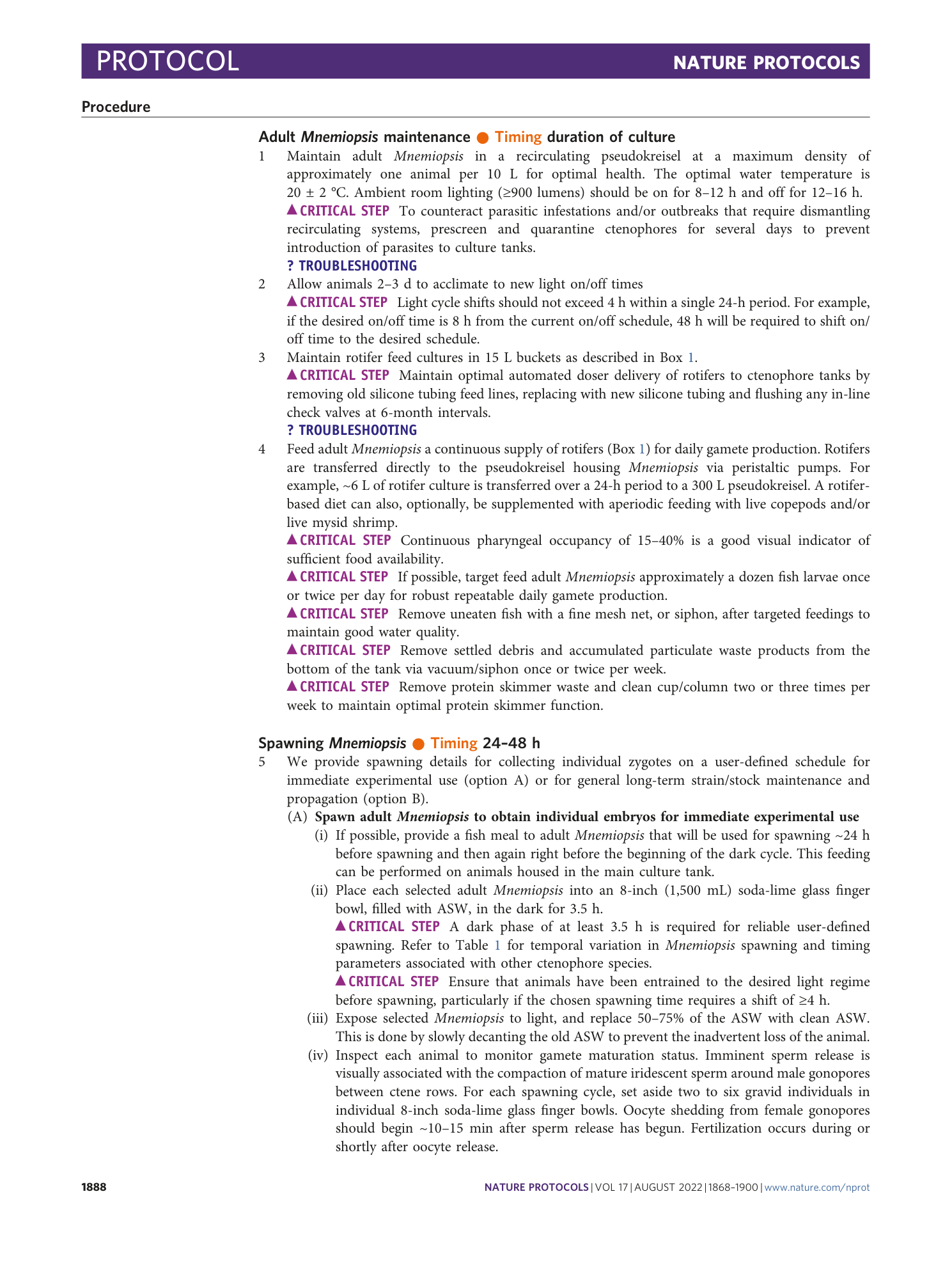
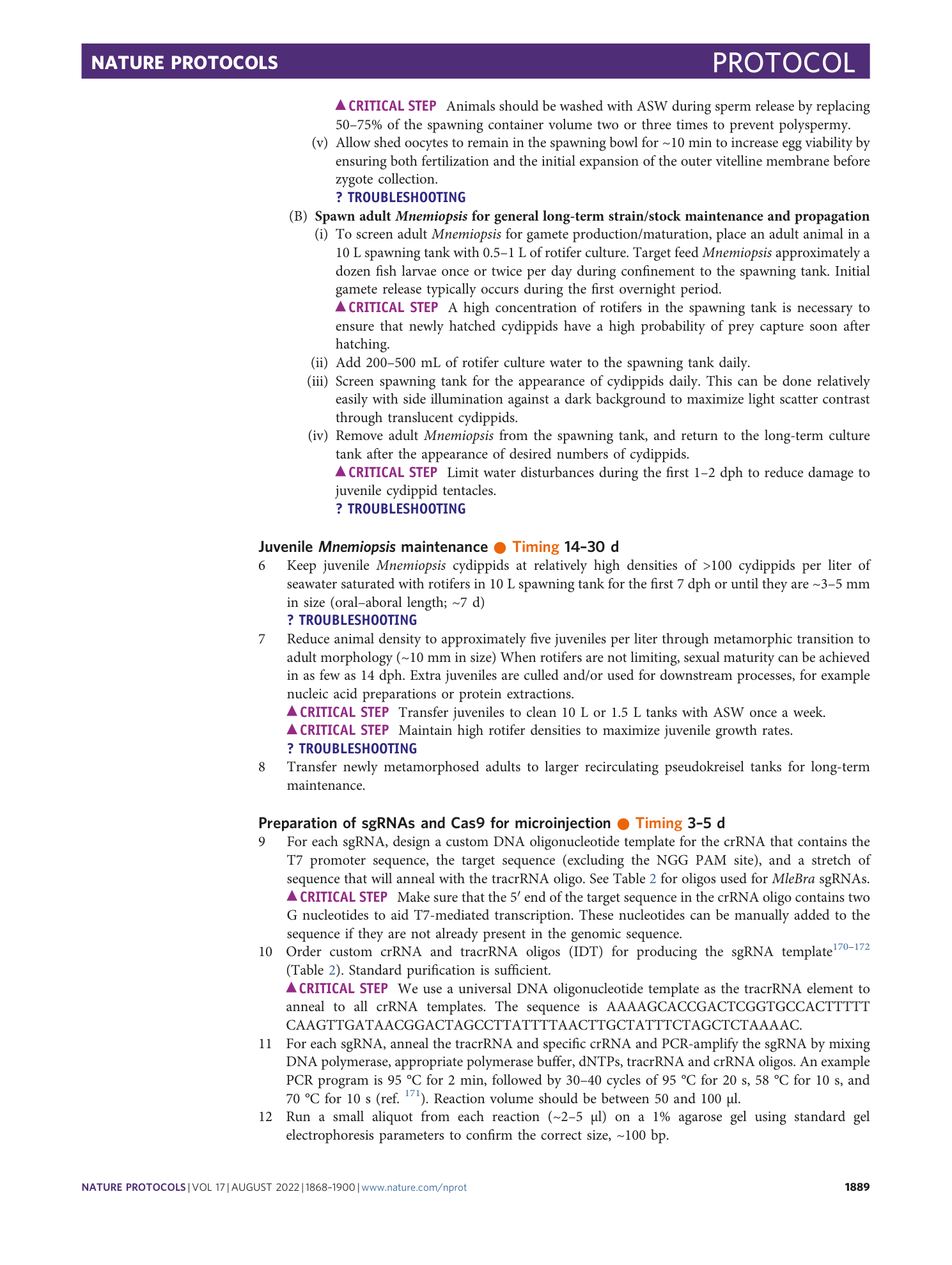
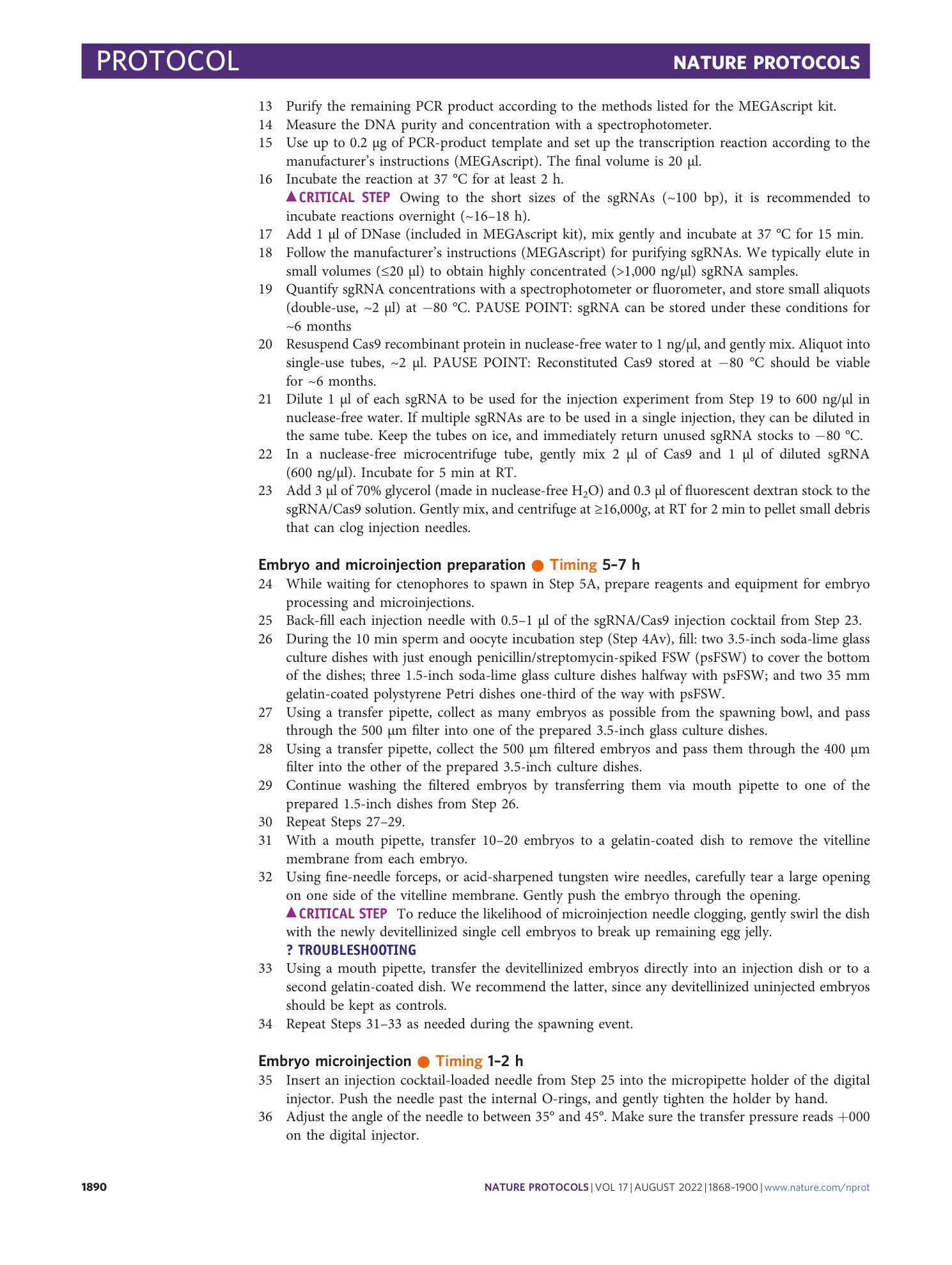
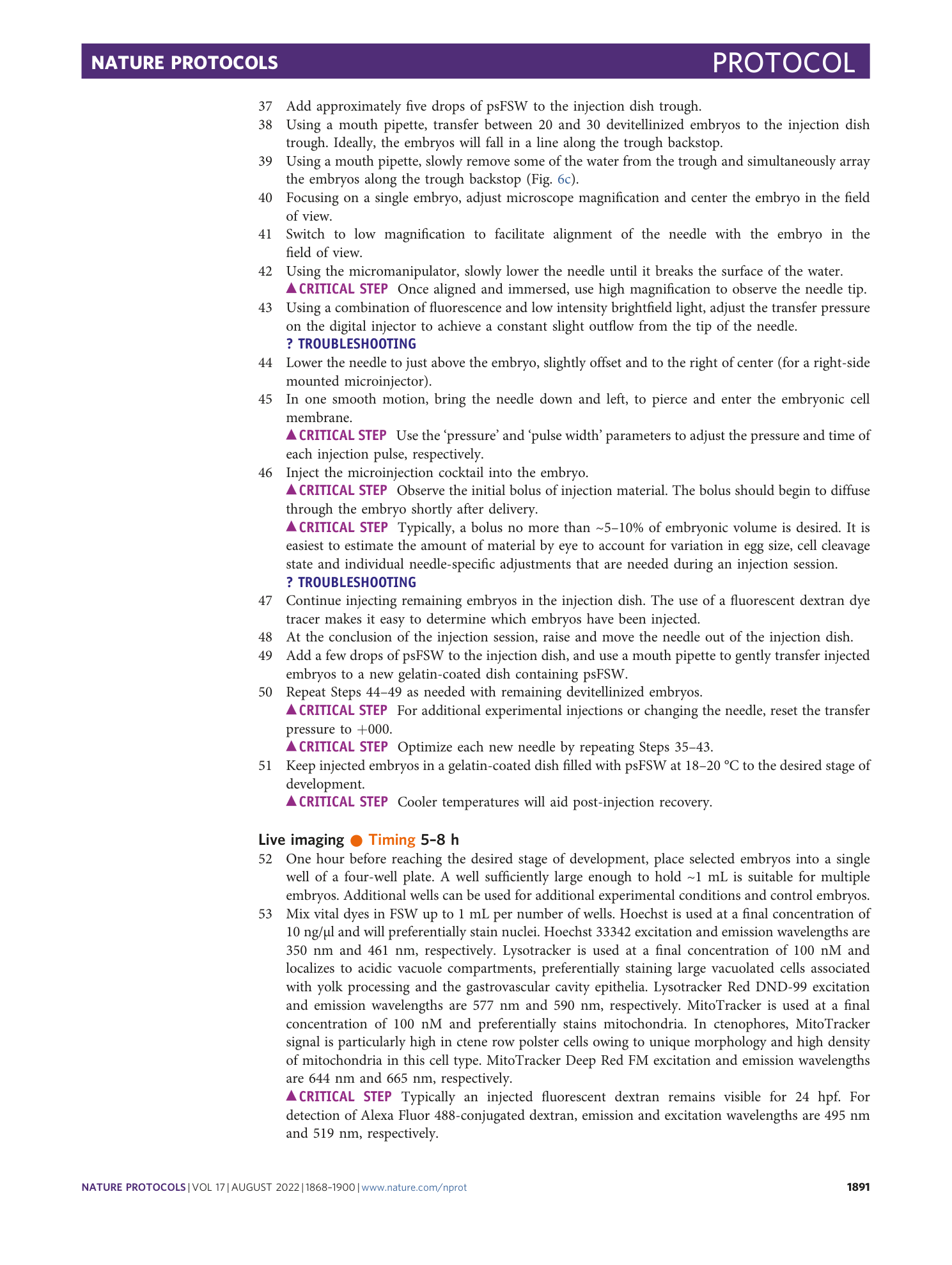
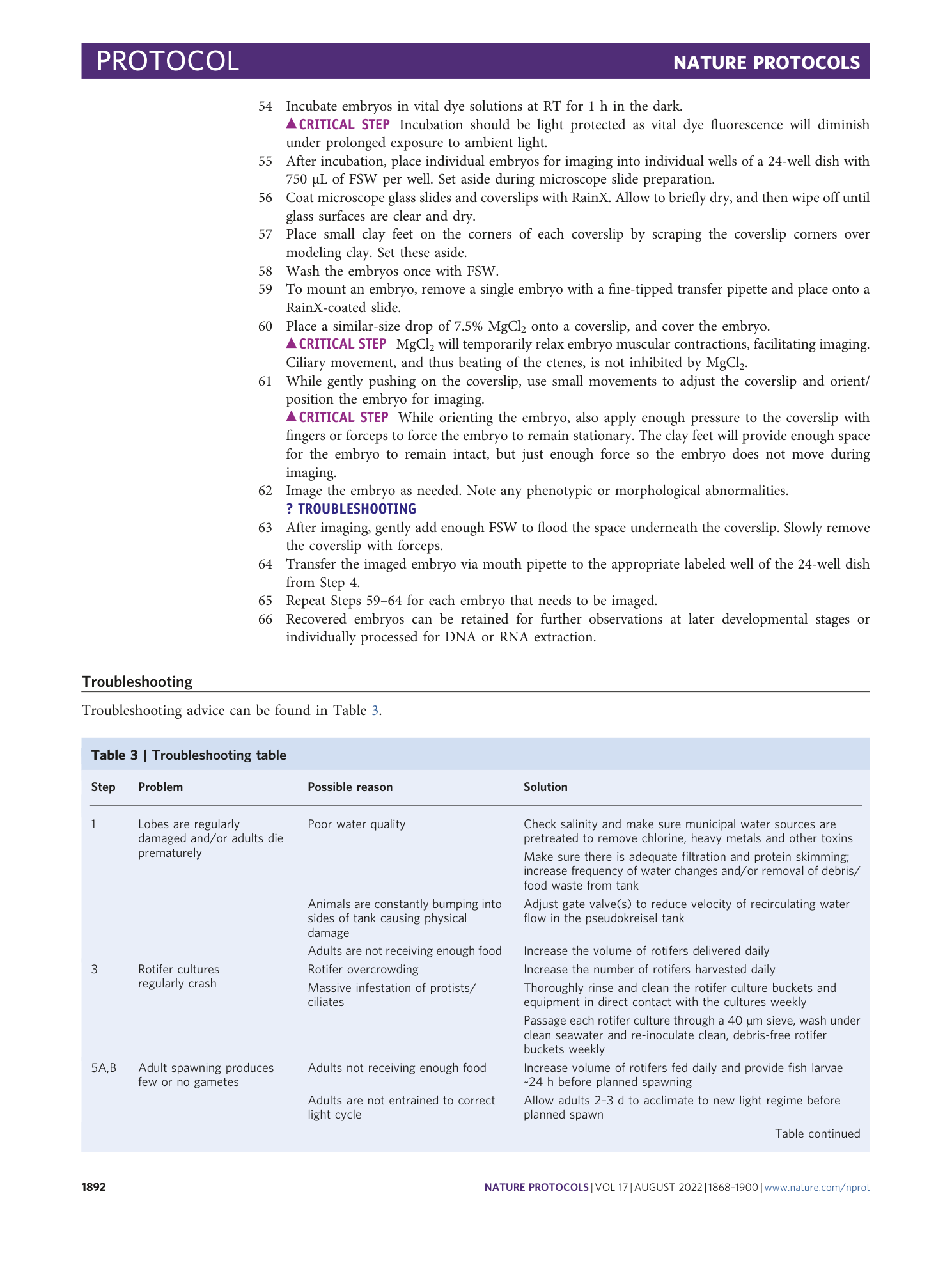
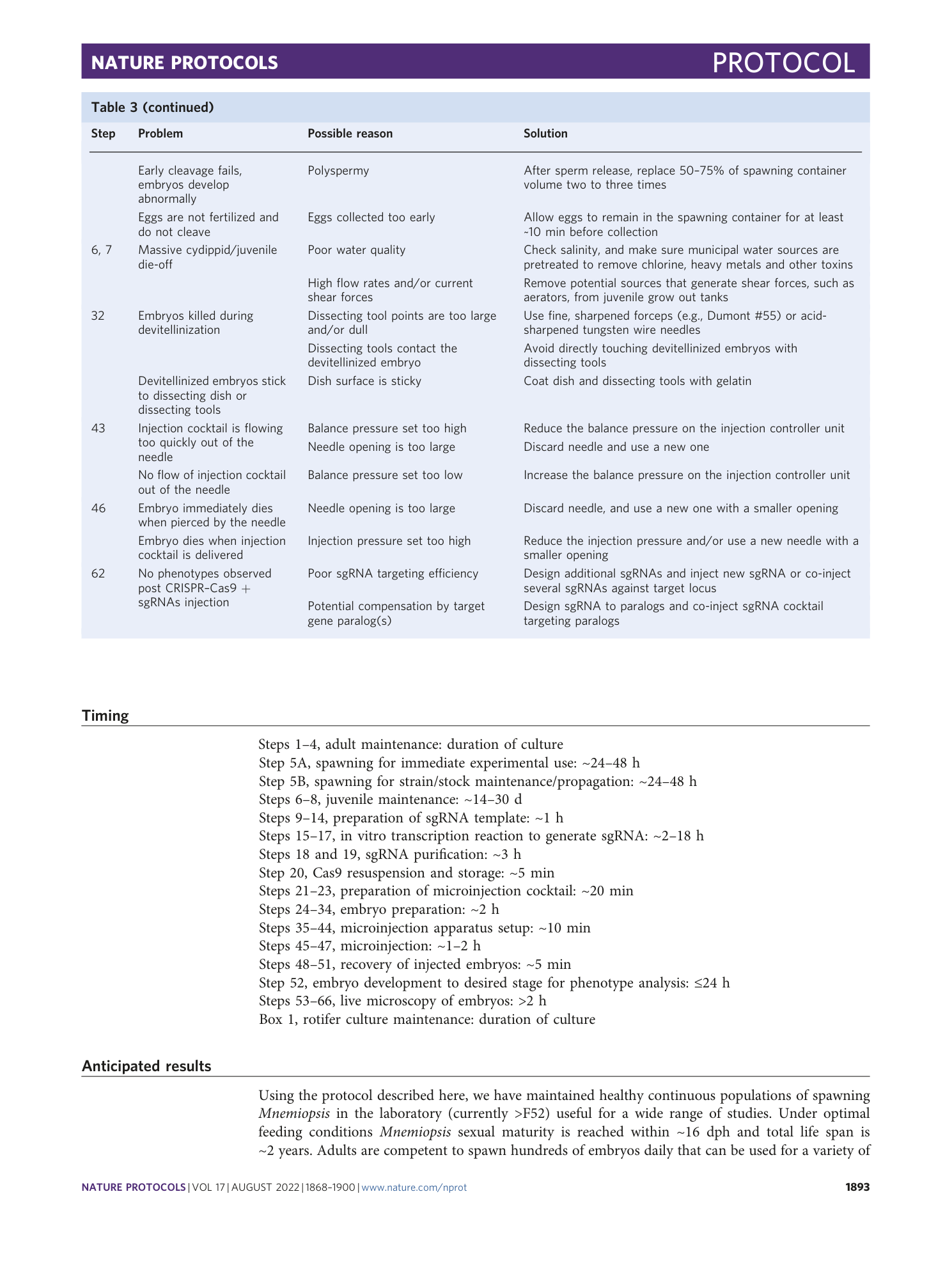
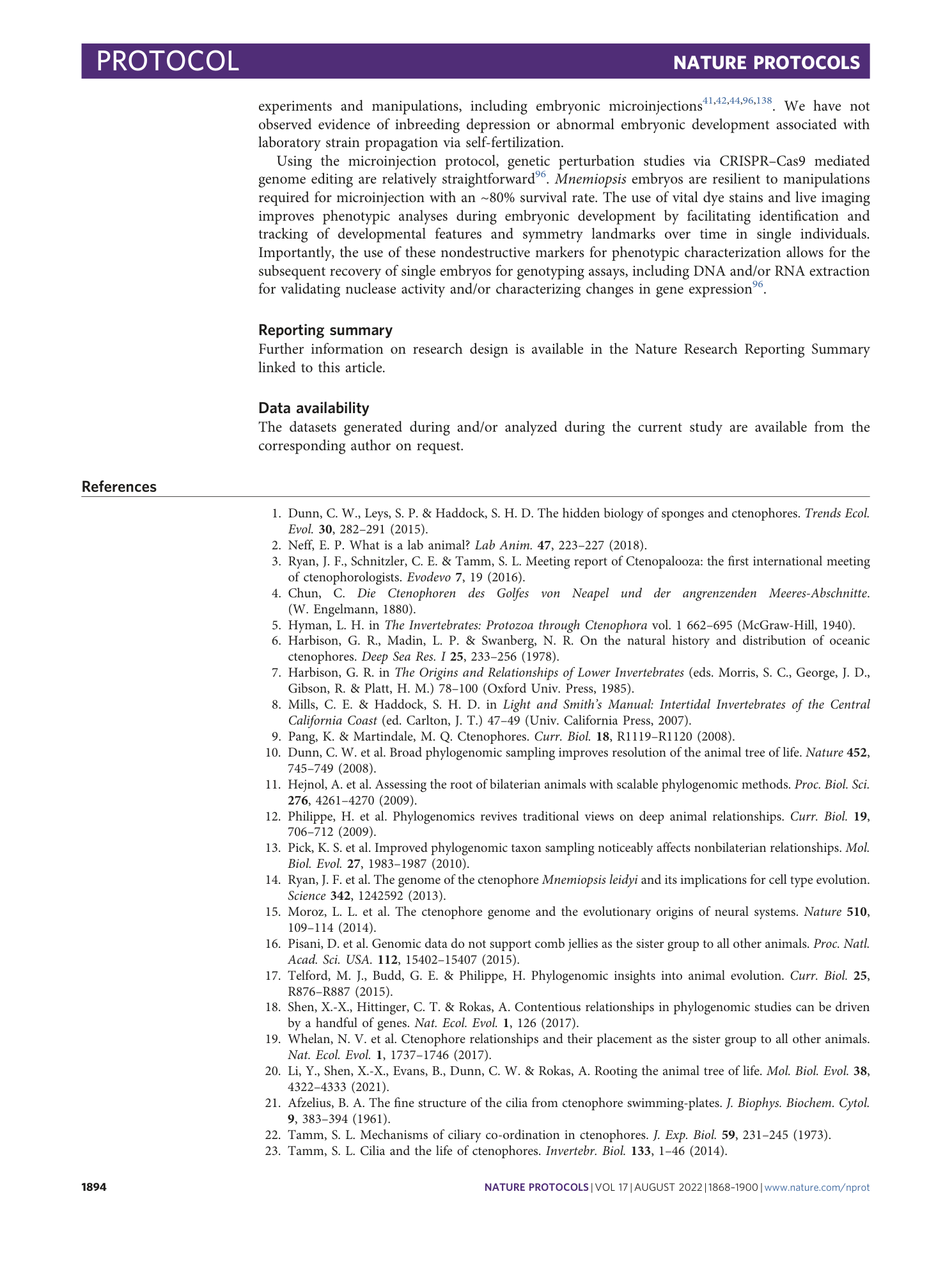
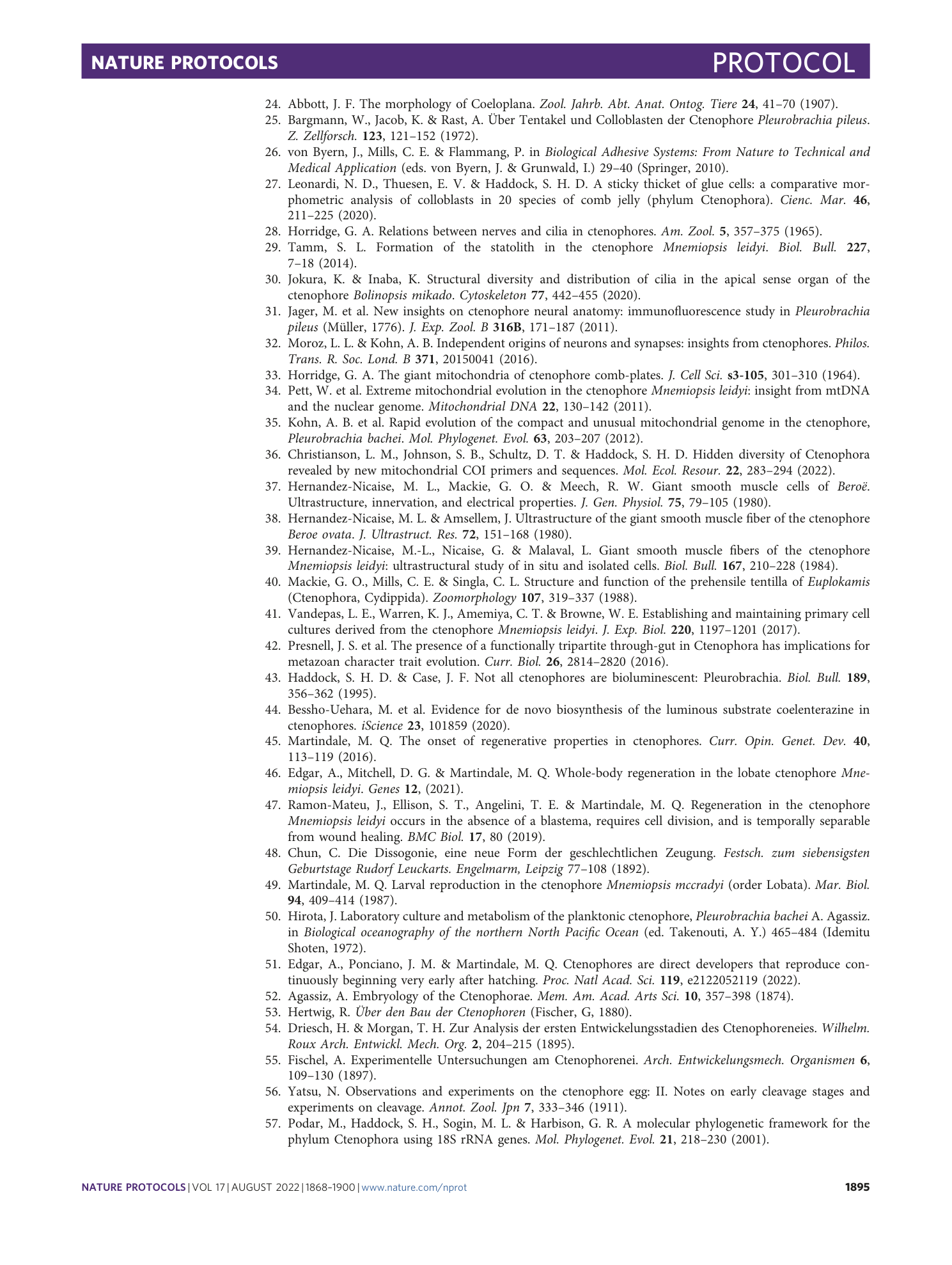
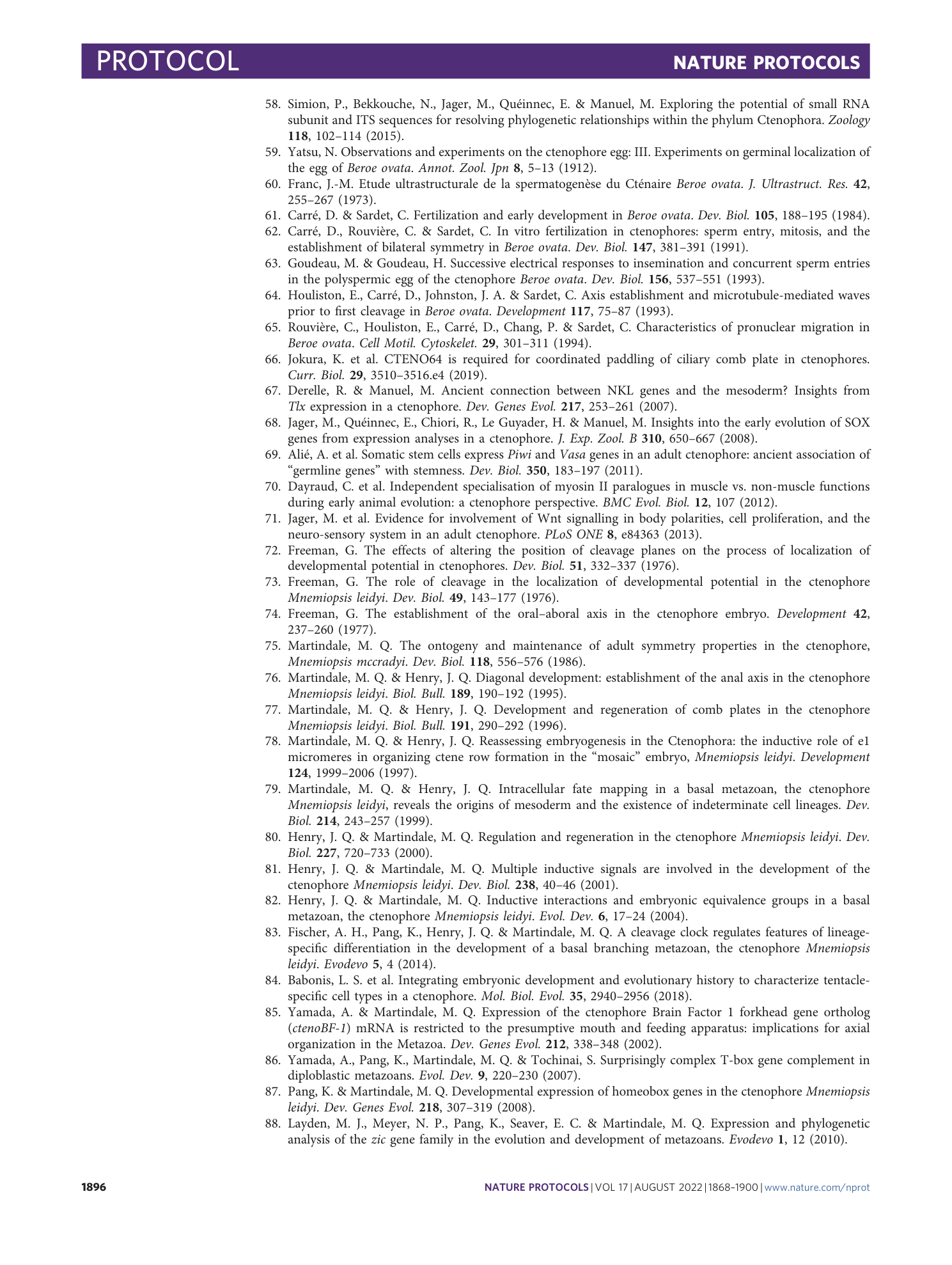
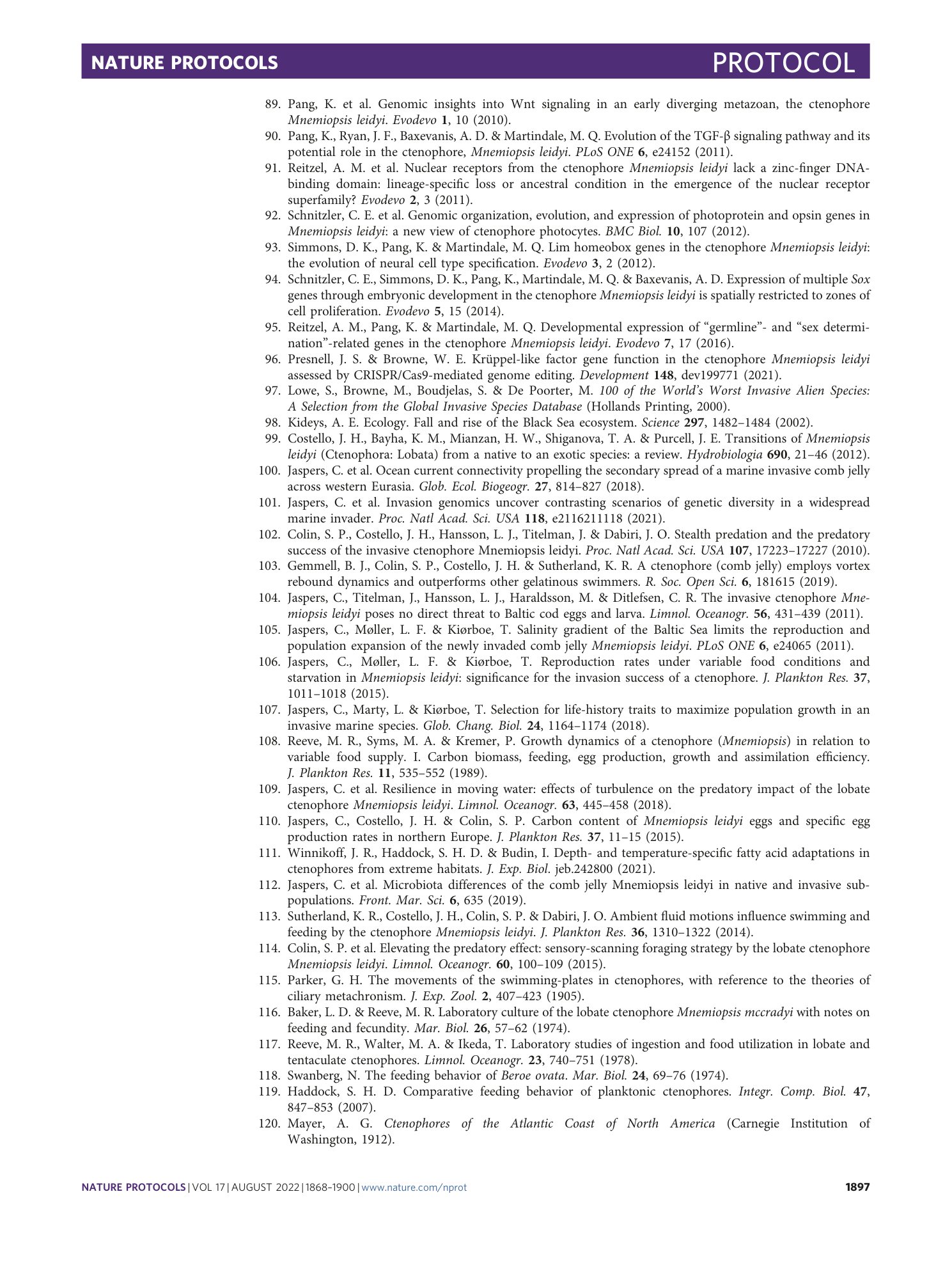
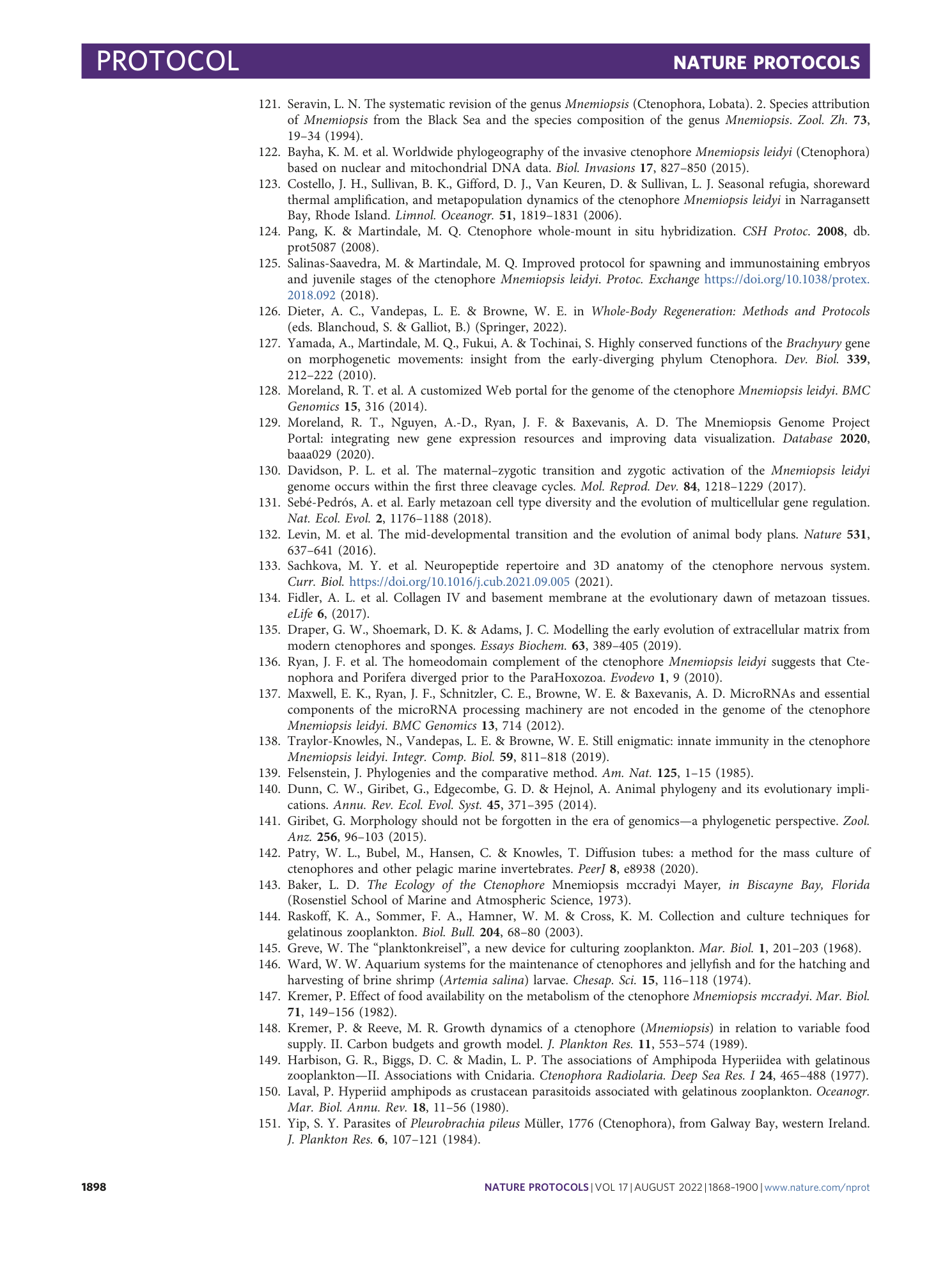
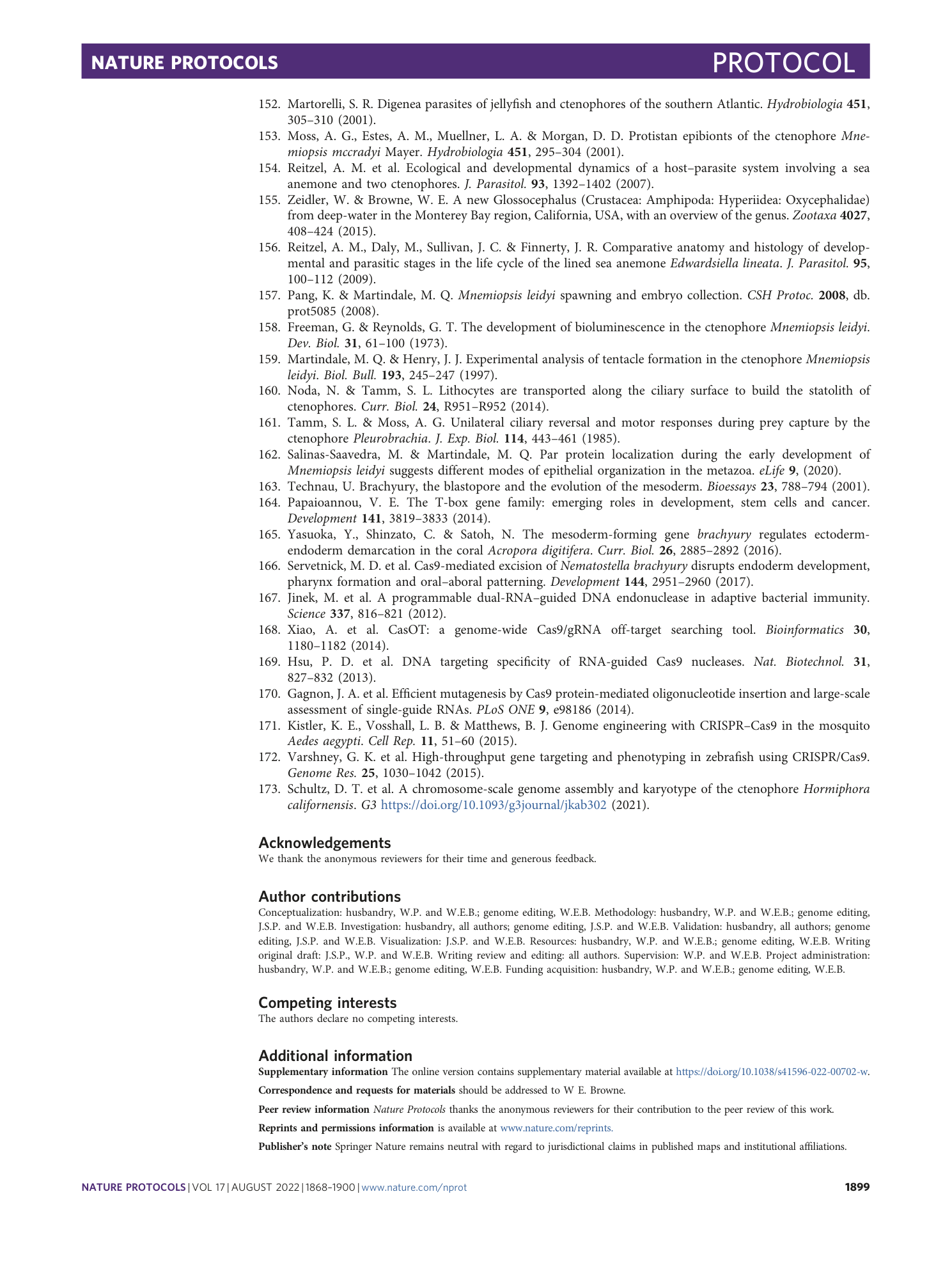
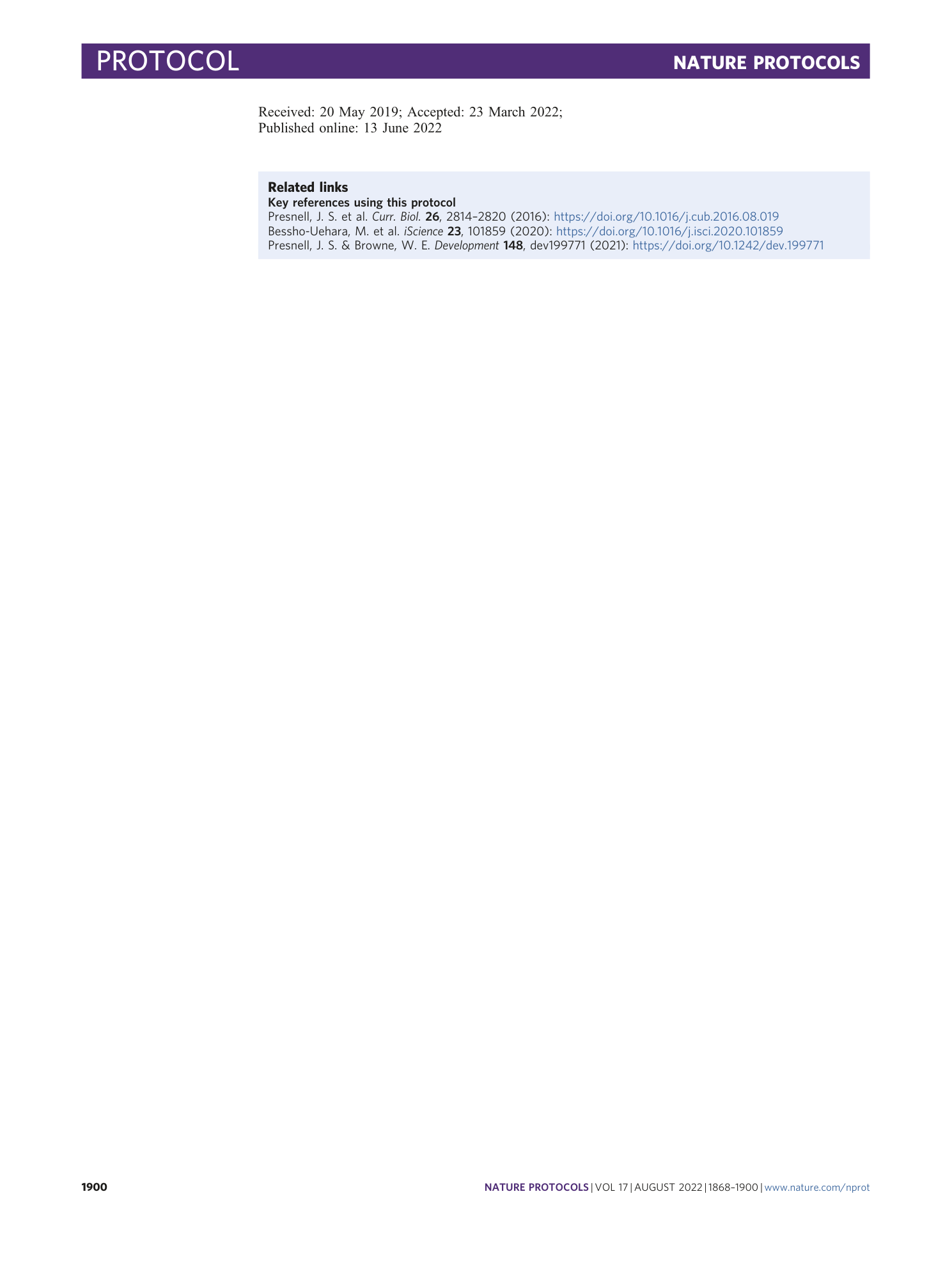
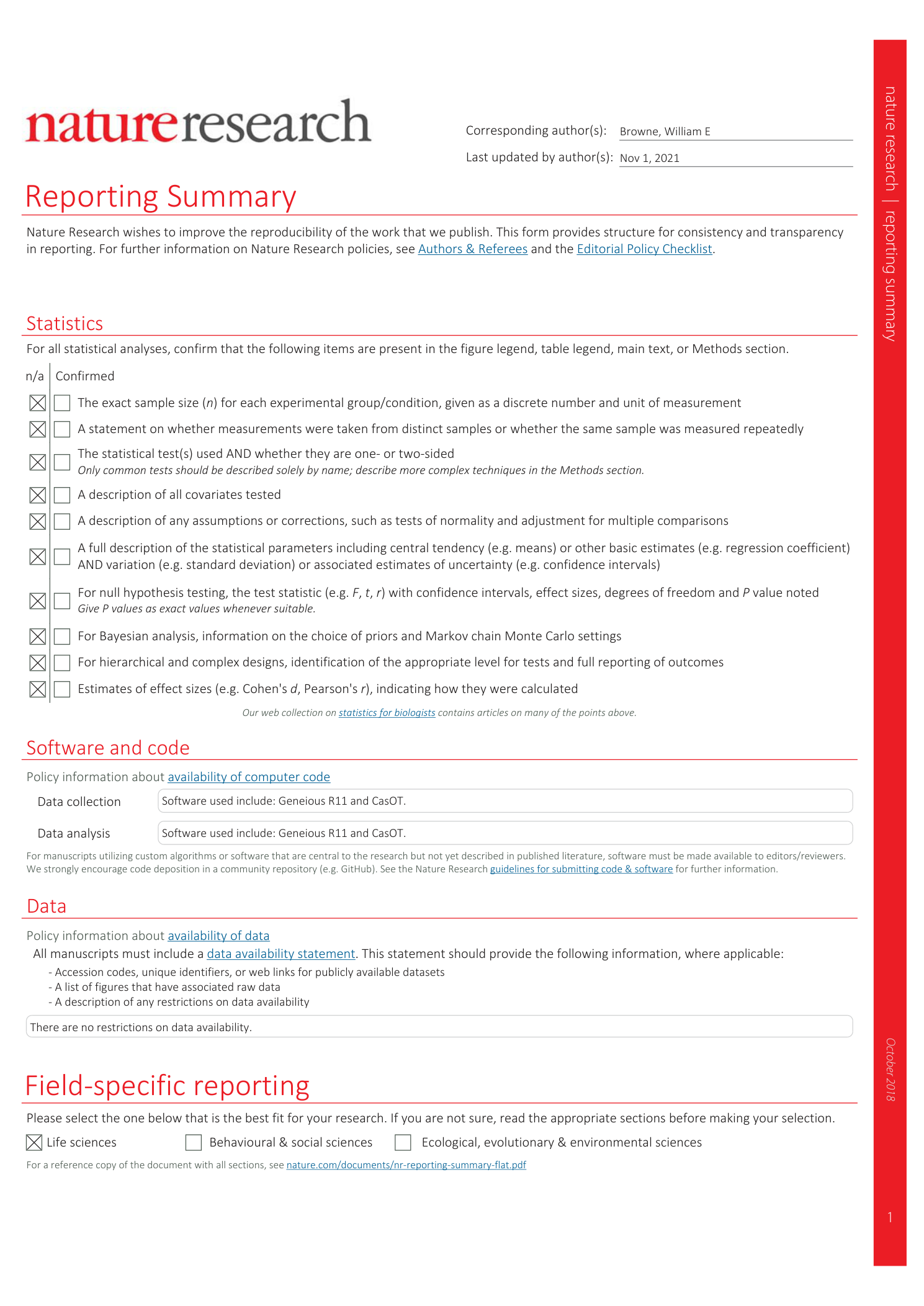

Supplementary information
Supplementary Information
Supplementary Figs. 1 and 2
Reporting Summary
Supplementary Video 1
Demonstration of target feeding a Mnemiopsis leidyi adult. Zebrafish larvae ( Danio rerio ) that have been pre-washed with ASW are delivered directly to the tentacle lined feeding grooves via plastic pipette where they become ensnared in adhesive material produced by colloblast cells lining the tentilla. The trapped fish larvae are then transported orally, and engulfed
Supplementary Video 2
Juvenile Mnemiopsis leidyi cydippid capturing prey in tentacles. During juvenile stages, the two main tentacles extend into the surrounding water column from which side branching tentilla are then deployed to form a dense network of sticky colloblast cells used to ensnare nearby plankton
Supplementary Video 3
Juvenile Mnemiopsis leidyi cydippid characteristic tentacle deployment behavior. Cydippids typically swim a looping pattern, saturating the local water column with colloblast lined tentacles and tentilla to maximize prey capture

